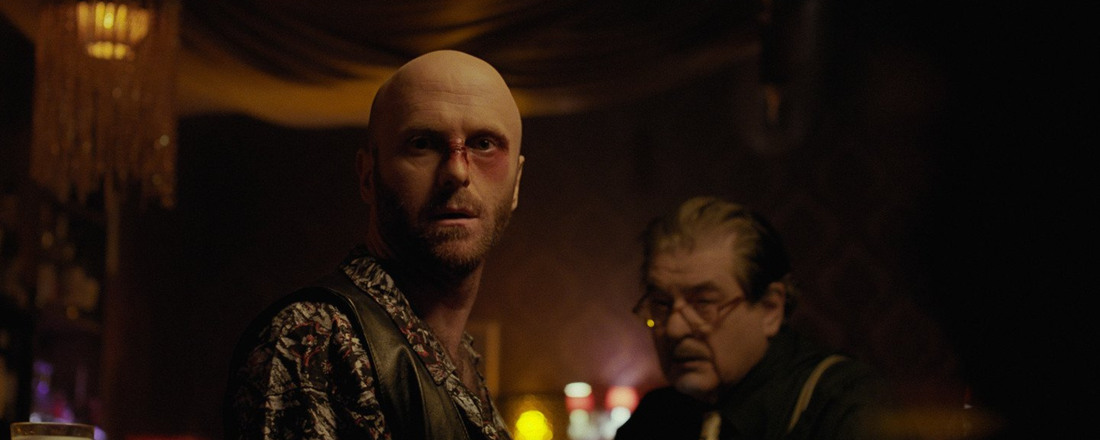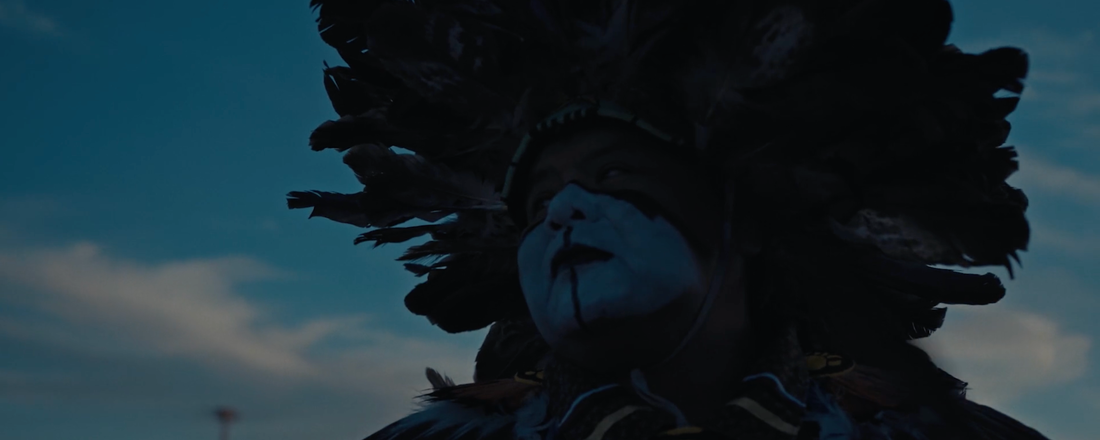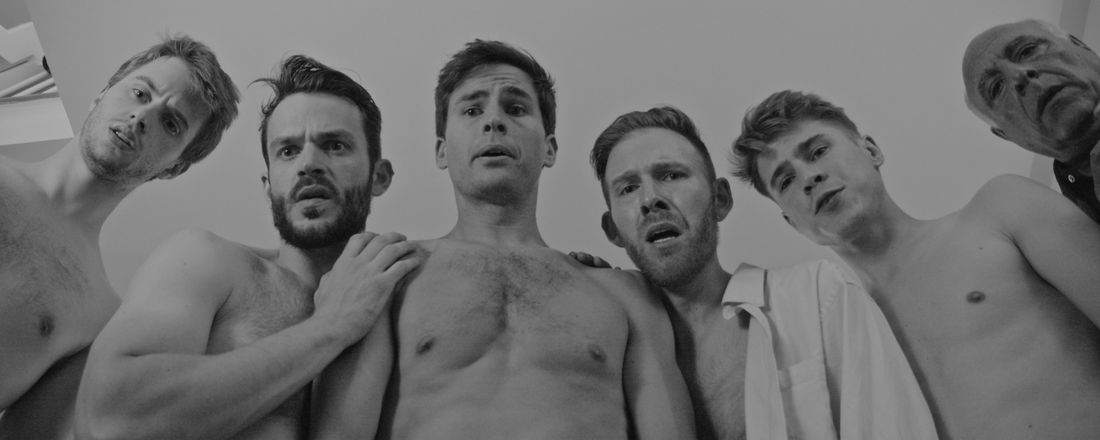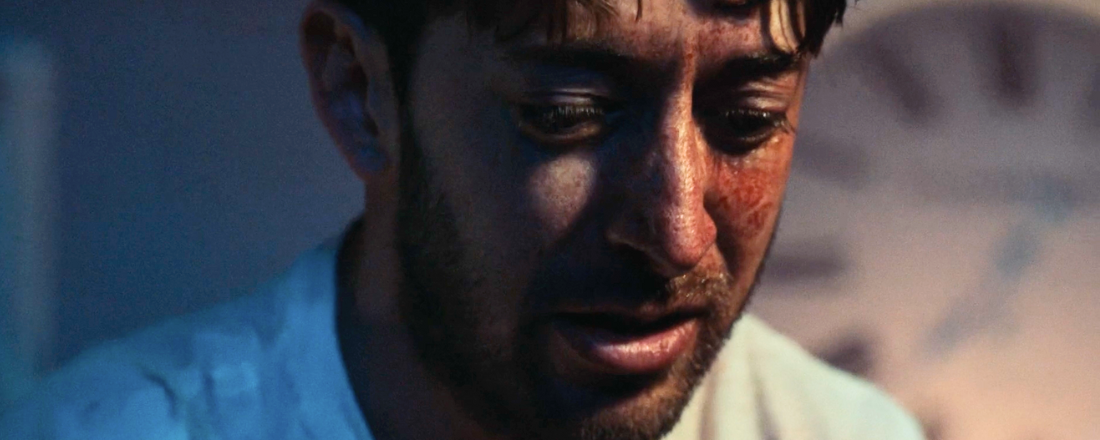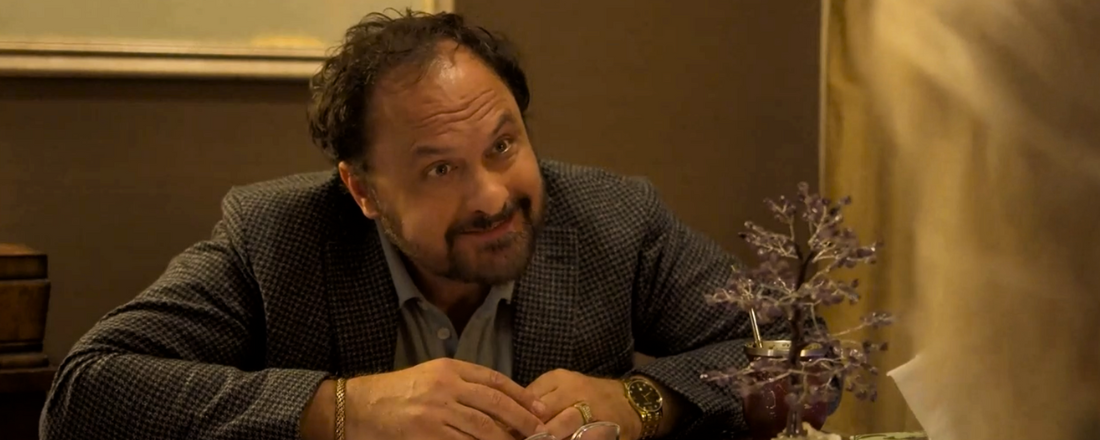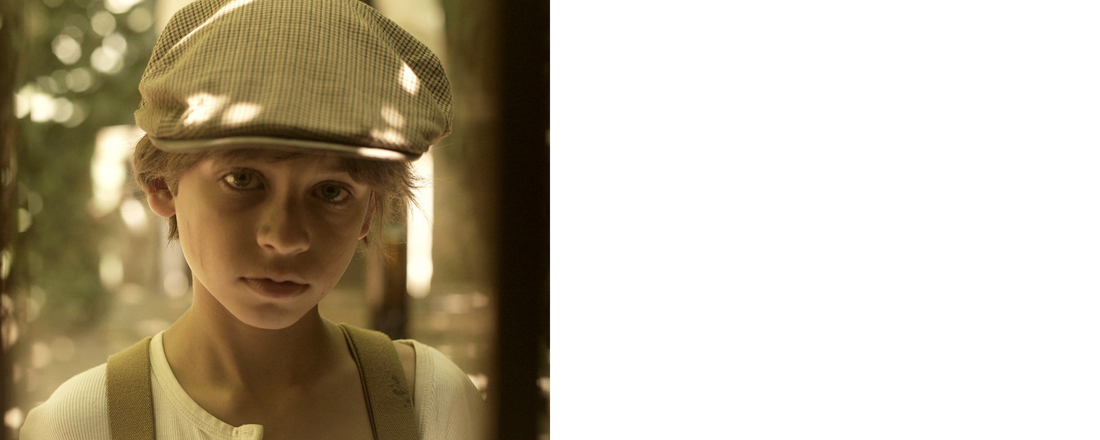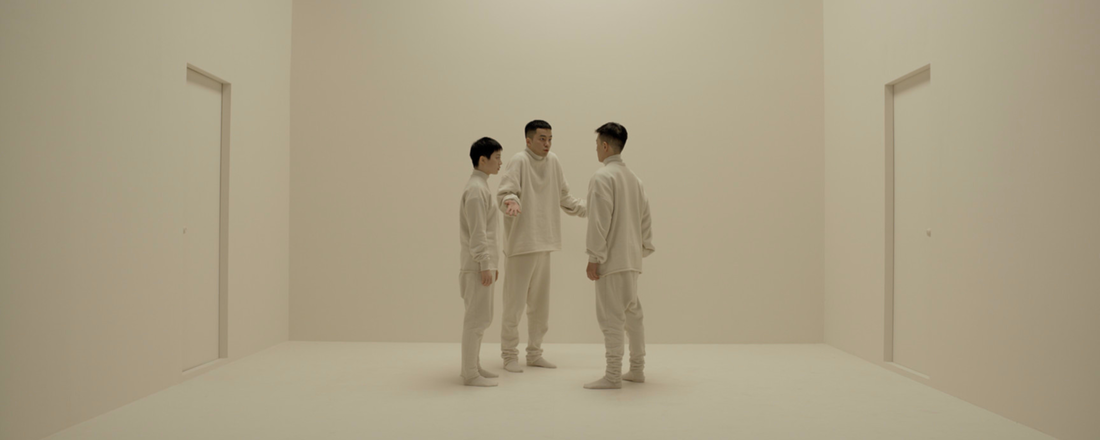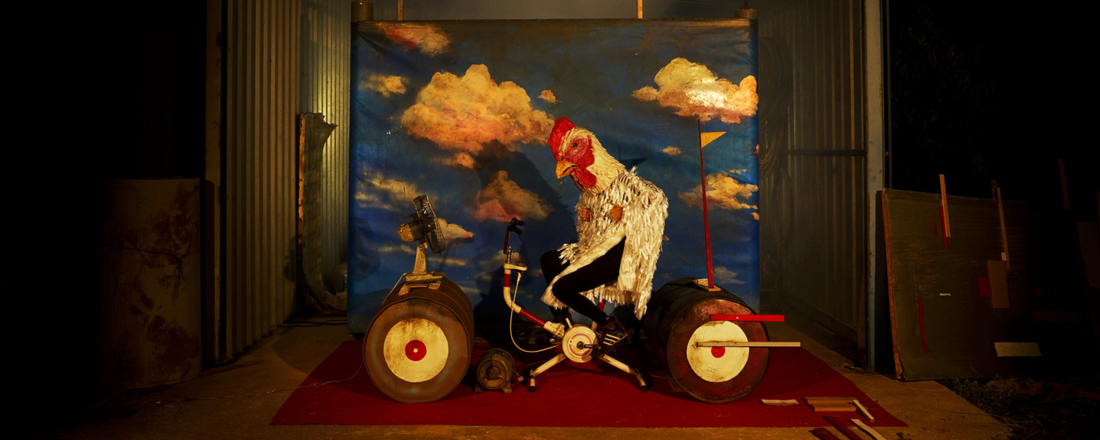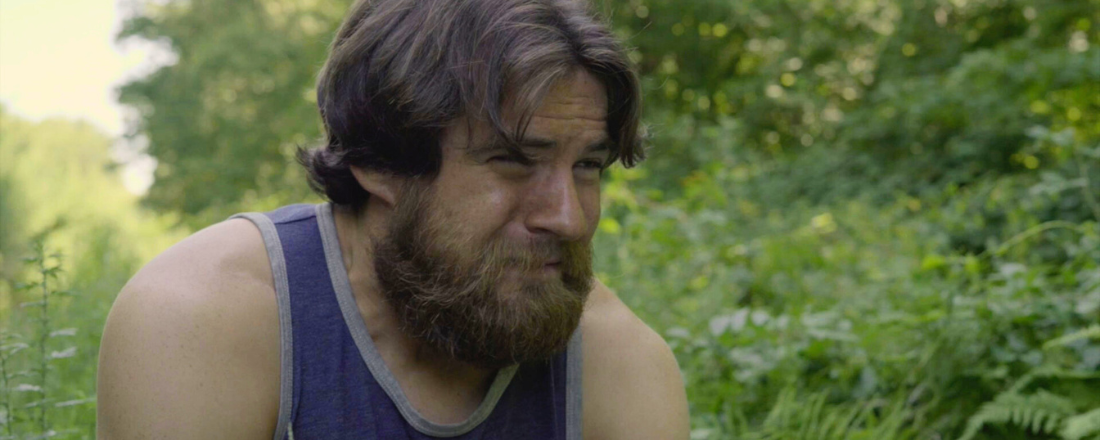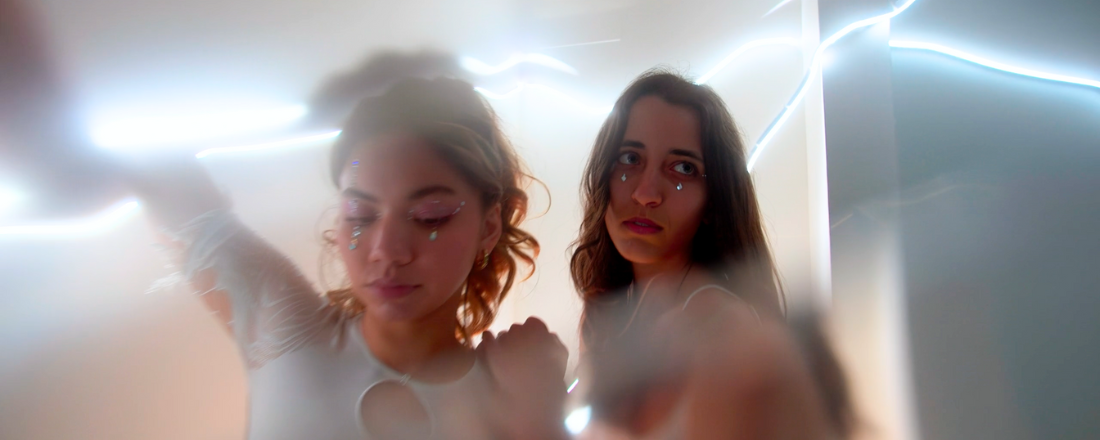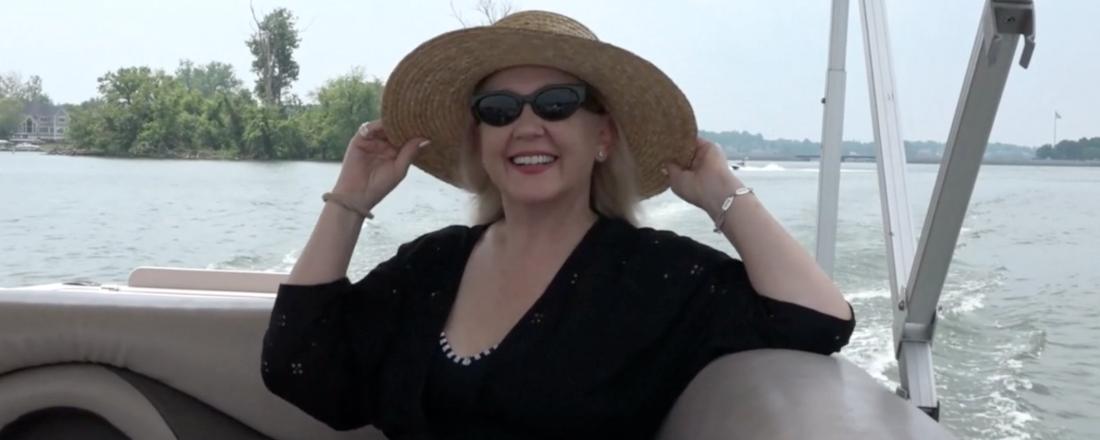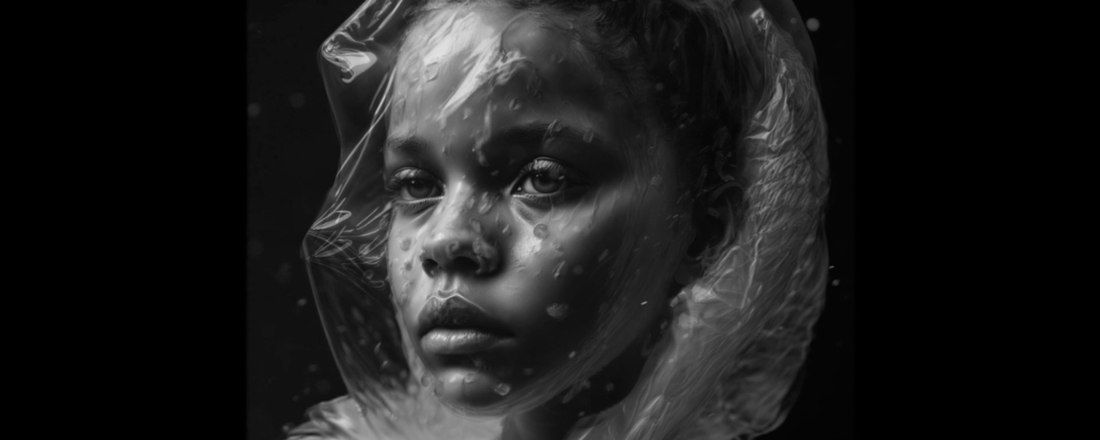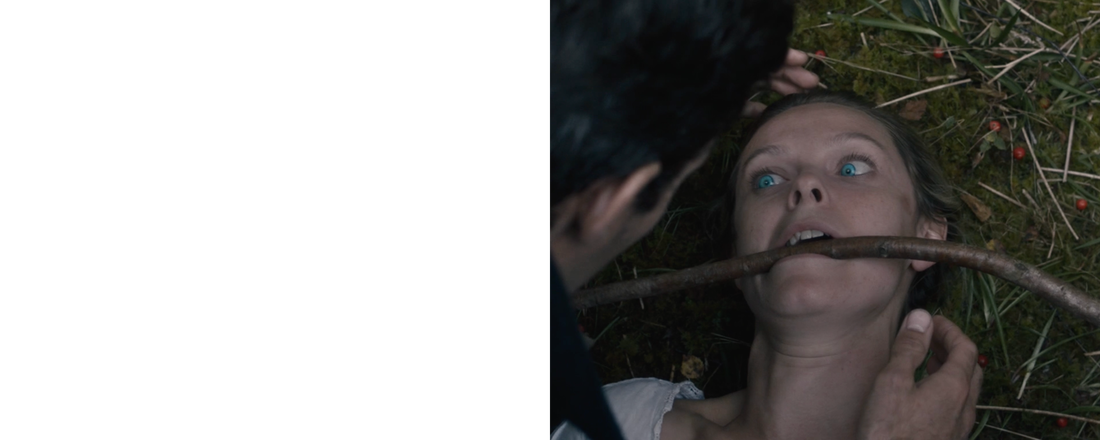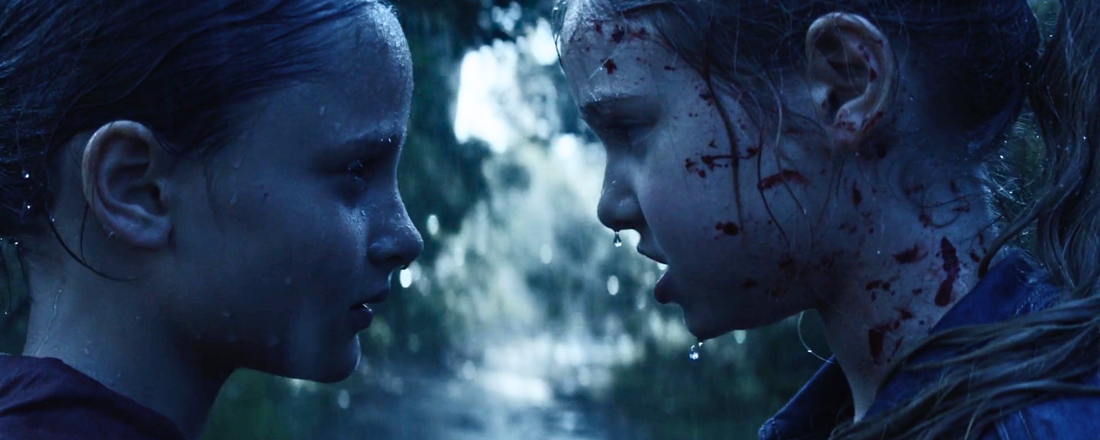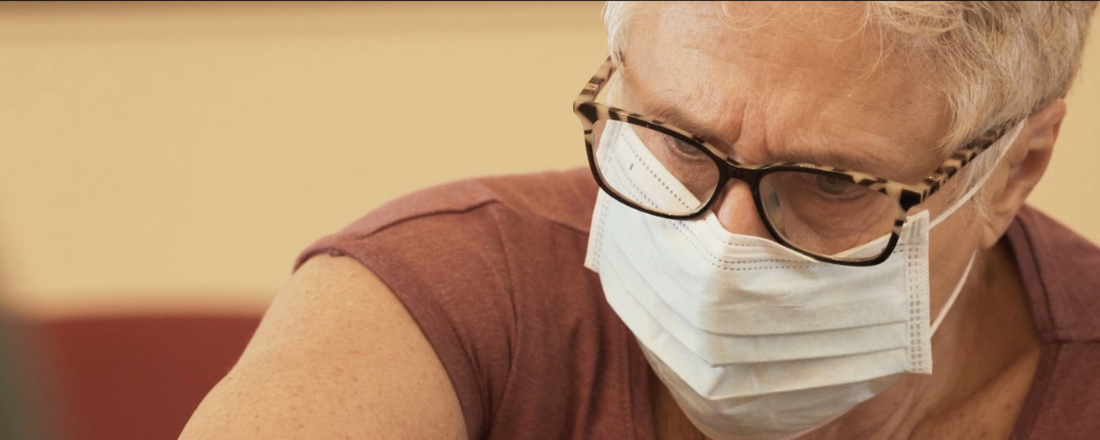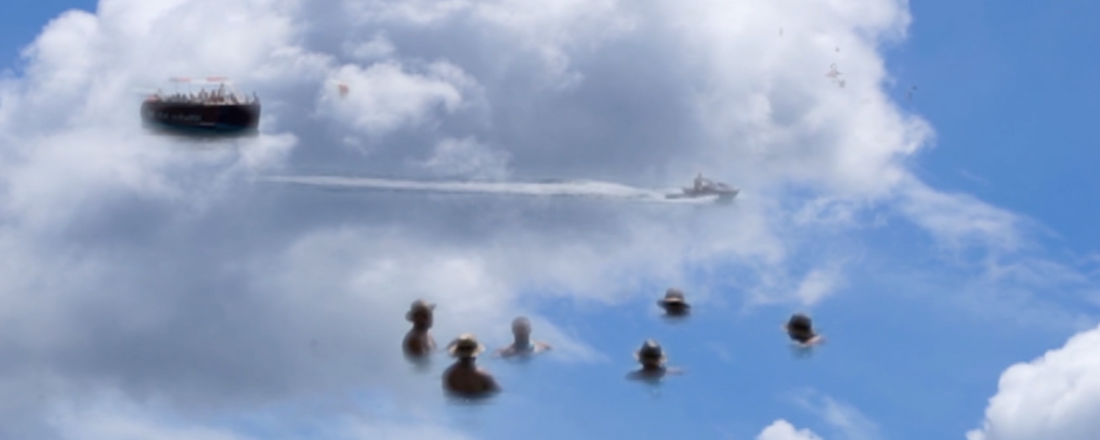|
F I L M E S S A Y S
|
Transience, Nihilism, and the Urban Melancholia: Interrogating Thomas Bischof's 'Servus Karl' through the Prism of Viennese Malaise"
In the intricate and densely layered tableau of contemporary auteur cinema, Thomas Bischof's 'Servus Karl' emerges as a cataclysmic odyssey into the abysmal intricacies of the human psyche. Taking cues from the neorealistic sagas of De Sica, and channeling the emotional rawness of Kieslowski's urban tales, Bischof captures the desolation and inherent nihilism of a milieu on the precipice of existential oblivion. The streets of Vienna, reminiscent of the dimly lit alleyways of Wong Kar-wai's Hong Kong, become a diorama of lives tethered by despondency, with Karl, portrayed with pungent gravitas by Erwin Steinhauer, epitomizing the Freudian 'Todestrieb' – the inevitable dance with death and the inescapable human desire for self-destruction.
Drawing from Lacanian psychoanalysis, Karl's journey through bars and brothels is less a passage through physical locations, but rather a traversal across a symbolic order. This order, punctuated by stasis and a palpable dread of the future, forms a poignant reflection on the socio-cultural shifts experienced by the "ordinary people" of Vienna, as elucidated by Bischof's directorial statement. The tragic intersection of Karl's and Julie's (a deeply affecting performance by Isabella Jeschke) narratives echoes the tragic inevitability found in Fassbinder's works, wherein societal constraints and individual desires tragically collide, often with fatal consequences. In the realm of independent cinema, 'Servus Karl' stands as an elegiac testament to the changing textures of urban life. The intoxicating blend of raw realism and stylized vision (kudos to DOP Judith Stehlik and colourist Tobias Ascherman) carves a niche for the film in the annals of modern cinema. While rooted in the specificities of Vienna, its thematic universality, underpinned by Bischof's profound understanding of the intricacies of the human soul, transcends geographies, echoing the adage of Tarkovsky – that art must be as personal as a letter and as universal as scripture. Sociopolitical Panoramas, Psychoanalytic Topographies, and Cine-Liminality: A Discourse on 'This Land' by Matthew J. Palmer
Matthew J. Palmer's "This Land" effortlessly traverses the intricate mesh of America's sociocultural tapestry, functioning not merely as a cine-document but as an intricate Freudian mise-en-scène of the collective American unconscious. Situated temporally within the tumultuous Election Day of 2020, the film, reminiscent of the observational cinema pioneered by the likes of Wiseman and Rouch, offers an unadulterated lens into the hearts and minds of its diverse subjects. Much like Tati's "Playtime" utilized the Parisian urban milieu to reflect societal alienation, "This Land" seizes upon the vast American landscape to critique, and perhaps more poignantly, introspect on the fraying seams of its nationhood. This psychoanalytic journey not only delves deep into the Lacanian realm of individual desires and anxieties but navigates the broader Jungian collective psyche formed by race, politics, sexuality, and media.
By marshalling an ensemble of over fifty filmmakers, Palmer curates an intricate cinematic symphony that resonates with the polyphonic narratives reminiscent of Kieslowski's "Decalogue" or Inarritu's "Babel". Yet, it is the conscious effort to eschew judgement that elevates this documentary into a realm that aligns more with Deleuzian cinematic philosophy than traditional documentary narration. The film becomes a rhizomatic network of stories, experiences, and memories. The ethnographic purview of this work, at times, resonates with the "cinéma vérité" of the French New Wave, capturing the raw, undulating zeitgeist of an America on the cusp of historical upheaval. In sum, "This Land" is a profound exploration of the American ethos. While the very democratization of the film's financing serves as a metanarrative to its thematic core, the film, in its essence, stands as an ode, a lament, and a reflection of a nation grappling with its manifold identities. Aided by the quintessential contributions of directors like Michelle Marrion and Ben Rekhi, the documentary is more than just a snapshot of a moment in time; it is a cinematic dialectic on what it fundamentally means to exist within the shifting sands of modern American socio-polity. Nihilism, Temporality, and Alienated Affection: Decoding 'That Cold Dead Look In Your Eyes' by Onur Tukel
In a melange of absurdist comedy and philosophical introspection, Onur Tukel's latest opus, "That Cold Dead Look In Your Eyes", excavates the psyche of urban ennui, the pervasive alienation of modern relationships, and the societal disillusionment emblematic of auteurs like Antonioni and Tarkovsky. Tukel, already renowned for his transgressive cinema—think "Catfight" or "Black Magic for White Boys"—engages in a cinematic discourse that is almost Kafkaesque, mingling the mundane with the monstrous, grounding the spectral in reality. The narrative interplays between Leonard and Dennis become emblematic of an Oedipal conflict, a Freudian dance of power and emasculation set against a backdrop of an uncanny cityscape, punctuated by the unsettling appearance of mysterious black boxes, reminiscent of Bresson's metaphysical explorations.
The film is linguistically rooted in French, perhaps a homage to the existential ruminations of the Nouvelle Vague, imbuing its narrative with an atmospheric gravitas that recalls Godard's "Alphaville" or Truffaut's "Shoot the Piano Player". Tukel's choice to oscillate between color and monochrome not only augments the film's temporal disjunction but also positions it within the annals of contemporary cinema's homage to the golden era of European art-house—echoing works like Paweł Pawlikowski's "Ida". It is within these psychoanalytic and cinematic juxtapositions that characters like Leonard and Dennis emerge as fractured Everymen, navigating the Sisyphean task of seeking purpose in an indifferent cosmos. In summation, "That Cold Dead Look In Your Eyes" is Tukel's magnum opus—a postmodern ode to the dialectics of desire and despair, love and loss, meaning and void. With laudable performances by Franck Raharinosy and Alan Ceppos, who have garnered well-deserved accolades, the film stands as a testament to Tukel's prowess, reaffirming the sentiment that he is indeed a luminary in NYC's independent film circuit, carving narratives that challenge, provoke, and linger. Evocations of Urban Poetics, Identity, and Existential Resonance in Contemporary Cinematic Expression
"Folded Whispers," directed by the collaborative trio of Mark Anthony Thomas, Shane McFarland, and Jordon Rooney, presents a striking 25-minute documentary short that delves into the intricate tapestry of urbanism, identity, and introspective lyricism. This film emerges as a poignant exploration in the realm of independent cinema, echoing the philosophical depths of auteurs like Tarkovsky and the existential rawness akin to the works of Bergman.
Set in the historic Kelly Strayhorn Theater, a haven for Black and queer artistic expression in Pittsburgh's East Liberty neighborhood, the film interweaves 17 original poems by Mark Anthony Thomas. His poetic odyssey, reinvigorated after a 15-year hiatus, traverses the landscapes of love, loss, racial identity, and the perturbations of the pandemic era. Each verse unfolds like a cinematic vignette, imbued with psychoanalytic and philosophical undercurrents that challenge and engage the viewer in a dialectic of self and society. Produced by Built Different, "Folded Whispers" transcends the boundaries of a performance film. It is a deeply personal narrative, a reflective journey through the prisms of urbanity and the multifaceted dimensions of human experience. The film, in essence, is a cinematic love letter, not just to the Kelly Strayhorn Theater but to the very act of poetic creation and its power to illuminate the human condition. The directorial approach of Thomas, McFarland, and Rooney is nuanced and introspective, evoking the stylistic flourishes of independent and global cinema. They craft a visual language that marries the poetic with the cinematic, creating an immersive experience that resonates with the viewer on both an intellectual and emotional level. In "Folded Whispers," the audience is invited to traverse a labyrinth of existential contemplation, exploring the intersections of self, society, and the unspoken dialogues that resonate within the folds of urban existence. This film is not merely a viewing experience; it is an intellectual odyssey, a rendezvous with the profound questions that define our collective human journey. Psychosomatic Labyrinths and the Specter of Reality: Navigating the Intricacies of Perceptual Distortion in Nick Benjamin's A State Of
In "A State Of," a 22-minute and 45-second psychological thriller, director Nick Benjamin artfully examines the intricate interplay between mental distress and perceptual reality. This narrative, centered around an agoraphobic apartment manager grappling with hypochondriasis and a witnessed murder, transcends its genre to become a profound exploration of the human psyche.
Benjamin, a Brazilian-American filmmaker with a history of award-winning projects, draws on his own experiences of psychological turmoil to create a narrative that resonates with the works of auteurs like Roman Polanski and Alfred Hitchcock. The protagonist's journey through his internal fears and external realities echoes the thematic elements of classic films such as "Repulsion" and "Rear Window," while incorporating a contemporary understanding of mental health and perception. The film's intricate examination of hypochondriasis and agoraphobia provides a modern psychoanalytic lens, reminiscent of Freudian and Jungian interpretations of the unconscious and its manifestations. Benjamin's adept storytelling crafts a character whose struggles with health anxiety and confinement reflect the broader societal issues of isolation and the search for truth in an increasingly complex world. The cinematography, a meticulous composition of confined spaces and subjective viewpoints, serves to enhance the protagonist's sense of entrapment and distorted reality. This visual strategy is not just a narrative device but also a psychoanalytic tool, delving into the depths of the character's psyche and inviting viewers to question their perceptions of reality. "A State Of" stands as a compelling addition to the genre of psychological thrillers, offering a nuanced exploration of mental health and its impact on perception. Benjamin's film is not only a narrative journey but also a philosophical and psychoanalytic inquiry, making it a thought-provoking piece for both film enthusiasts and scholars alike. Jewelry of Jilted Love and the Journey to Self-Actualization: A Psychoanalytic Interpretation of Michelle Renee Arthur's Rings Of The Unpromised
In "Rings Of The Unpromised," a 69-minute feature film by Michelle Renee Arthur, the narrative traverses the complex terrain of broken relationships and self-discovery. This film, set against a backdrop of unfulfilled promises, takes the viewer on a psychological and philosophical journey through the life of its protagonist, Heather, who discards her former lovers' jewelry into the water as a symbolic act of closure and rebirth.
Arthur's direction, infused with elements of existential philosophy and psychoanalysis, echoes the thematic depth found in the works of auteurs like Ingmar Bergman and Federico Fellini. The absence of Heather's lovers in the visual narrative, a conscious directorial choice, not only creates a sense of void but also serves as a metaphor for the Lacanian concept of 'The Other' – an ever-elusive object of desire that remains perpetually out of reach, similar to the narrative style seen in "Persona" and "8½." The film's exploration of themes such as ageism, the societal pressure to conform to norms of coupledom, and the quest for self-fulfillment aligns with the works of contemporary filmmakers who delve into the complexities of identity and relationships in a postmodern world. Arthur's approach to storytelling, which includes the innovative use of sound to depict unseen crowds and the intentional omission of a body double for Heather's younger years, adds layers of authenticity and introspection to the narrative. "Rings Of The Unpromised" stands as a philosophical inquiry into the nature of love, loss, and self-actualization. The film's emphasis on the significance of gifting jewelry and the search for happiness from within resonates with the Jungian concept of individuation – the process of becoming aware of oneself, transcending the personal and realizing the collective unconscious. Arthur's film is not just a story about failed relationships; it is a psychoanalytic and philosophical treatise on the journey to wholeness and the realization that true happiness lies within oneself. It challenges the viewer to reconsider the narratives we construct about love and fulfillment, making it a significant contribution to the discourse on contemporary independent cinema and psychoanalytic thought. Sanitization's Allegory in a Dystopian Realm: A Psychoanalytic Deconstruction of Jacob Henry Miles' The Cleaners
Jacob Henry Miles' television script "The Cleaners," set in the whimsically allegorical Kingdom of Tidy Up Land, transcends its animation genre to delve into the intricate tapestry of psychoanalytic and philosophical discourse. This narrative, focusing on the characters Broomy and Dusty, embodies a Sisyphean struggle against the ever-pervasive League of Filthy, echoing the profound existential dilemmas explored in the works of Kafka and Camus.
In this 28-page script, Miles crafts a universe where cleaning supplies become heroic personifications, fighting against the chaos personified by King Rubble and his cohorts. This dichotomy between order (The Cleaners) and chaos (League of Filthy) serves as a metaphor for the human psyche's internal conflict, resonating with the Freudian concepts of the Id, Ego, and Superego. The ongoing battle in Tidy Up Land, though overtly simplistic in its representation, subtly mirrors the socio-political tensions and ecological crises reflected in contemporary society. The script draws parallels to the dystopian narratives seen in films like "Brazil" by Terry Gilliam and "WALL-E" by Andrew Stanton, where the struggle for purity and order against the backdrop of decay becomes a central theme. Miles' narrative also navigates the Jungian archetypes through its characters. Broomy and Dusty, more than mere cleaning tools, become symbols of the collective unconscious, striving for order in a world teetering on the edge of entropy. Their quest is emblematic of the human condition's perpetual endeavor to find meaning and order in a seemingly disordered universe. "The Cleaners," in its exploration of these themes, elevates itself from a simple animated script to a philosophical and psychoanalytic inquiry. It challenges the viewer to consider the nuanced relationship between purity and corruption, order and chaos, and the human inclination towards sanitization – both literal and metaphorical. In doing so, Miles' work stands as a significant addition to the discourse on contemporary animated narratives that transcend their medium to offer profound existential reflections. Resilience and Laughter in the Face of Adversity: A Campy Exploration in 'Homeless Sam and Sally - The Movie'
"Homeless Sam and Sally - The Movie," directed and starred by the multi-talented Tyrone Evans Clark, is a unique feature that combines elements of camp, comedy, and hard-hitting reality. The film tells the story of a mother, Margaret Newborn, and her son, played by Clark himself, who navigate the challenges of homelessness. Their journey is marked by moments of daydreams, silliness, and randomness, offering a poignant yet lighthearted take on a serious social issue.
Director Tyrone Evans Clark brings a personal touch to the film, drawing on his own experiences with homelessness. This authenticity is evident in the way the film portrays the complexities and internal conflicts experienced by those who find themselves without a home. Clark's portrayal of Sam is a powerful representation of his inner demons and the struggle to come to terms with a harsh reality. The film stands out for its ability to blend dark themes with a comical twist, creating a narrative that is both engaging and thought-provoking. Clark's decision to cast himself as the lead character adds a layer of depth and realism to the film, as he embodies the character's struggles and resilience firsthand. "Homeless Sam and Sally - The Movie" is more than just a film; it's a statement about the power of humor and creativity in overcoming life's challenges. It's a testament to Clark's versatility as a filmmaker and his commitment to telling stories that resonate with both heart and humor. The film is a must-watch for those who appreciate cinema that tackles social issues with a unique and entertaining approach. Quest for Quirks: 'The Tissue Man' - A Whimsical Journey through La-La Land
"The Tissue Man," a vibrantly animated musical adventure, marks yet another creative venture by the multi-talented Tyrone Evans Clark. In this delightful escapade, the character 'The Tissue Man,' also voiced by Clark, embarks on a whimsical quest for tissue paper in a fantastical la-la land, meeting an array of colorful and eccentric characters along the way. The narrative unfolds in a world crafted from the fabric of imagination, mirroring the surreal experiences of the COVID-19 pandemic, particularly the bizarre scarcity of everyday items like tissue paper.
Tyrone Evans Clark, known for his work across various platforms and genres, infuses this animation with his signature blend of humor and creativity. Drawing from his personal experiences during the pandemic, Clark transforms a situation of discomfort and inconvenience into a playful and imaginative journey. The film’s premise, while rooted in the recent global crisis, transcends its origin to explore themes of adaptation, resourcefulness, and the human spirit's resilience. The animation is set to the catchy tune of “Gotta Get Some Tissue!”, a song that encapsulates the film's lighthearted and comical approach. Clark’s decision to morph the planned live-action video into an animated musical was a brilliant adaptation to the constraints imposed by the pandemic, showcasing his versatility and ingenuity as a filmmaker. "The Tissue Man" is not just an animated short; it's a testament to Clark’s ability to find humor and light in the face of adversity. It stands as a reminder that even in the darkest of times, creativity and laughter can prevail. This film is a must-see for audiences seeking a joyful respite from the ordinary, inviting viewers of all ages to join in on a journey filled with laughter and song. "Nostalgia, Ontology, and the Anthropocene: A Cinematic Exploration of 'LIFE ON MARS | Are We for Real?' by Aidan Amore"
Co-produced by No Greater No Lesser Creation, Redgun, and Vevey Paris Films, "LIFE ON MARS | Are We for Real?" marks an audacious departure from Aidan Amore's artistic predecessors. This film essay transcends the confines of a mere musical tribute to David Bowie's prophetic inquiry within the original "Life on Mars?" Instead, Amore delves into a philosophical and psychoanalytic odyssey that resonates with the existential quandaries posed by the late Bruno Latour concerning the critical zone of Earth's biosphere. This project arrives at a time when humanity grapples with the dire implications of global warming and the Anthropocene.
Aidan Amore, a Paris-based creactor—a term amalgamating creator and actor—emerges from the Swiss cultural fabric as a polymath reminiscent of Renaissance luminaries. His works, which have drawn attention from avant-garde publications like 'Les Inrockuptibles', are tinted with the hues of contemporary existential thought and cinematic theory. Amore's latest cinematic venture, following projects like 'F00LvsWORLD', seeks to anchor the celestial musings of interplanetary exploration back to the terrestrial concerns of ecological and cultural sustainability. Through a lens steeped in critical theory and auteur cinema, "LIFE ON MARS | Are We for Real?" employs an intricate tapestry of narrative techniques reminiscent of the works of auteurs such as Andrei Tarkovsky and Apichatpong Weerasethakul. The film weaves a dense narrative exploring themes of alienation, the search for authenticity, and the confrontation with the 'Other'—both in ourselves and in the cosmos. In this project, Amore collaborates with an eclectic mix of professionals—from music producers to 3D animators and graphic designers—each adding a layer of complexity and richness to the film. The collaborative effort underscores the film's core message: the imperative of grounding human experience in an era where digital and celestial escapisms are all too prevalent. In his directorial statement, Amore articulates a vision that challenges the normative structures of a modern society he perceives as imbued with imperialistic and capitalist values. His narrative aims to disrupt these narratives by fostering a culture that is more reflective, inclusive, and sustainable. Amore's "LIFE ON MARS | Are We for Real?" is not just a film; it is a call to action for the late Millennials, Gen Z, and Gen A to redefine cultural and ecological narratives for a sustainable future. This film is an invitation to engage with cinema not only as a form of entertainment but as a critical tool for social and ecological activism. It implores viewers to reconsider our place within the cosmic tapestry and the planet we inhabit, questioning the very realities we take for granted and the futures we are crafting through our actions or inaction. "Coastal Fire - A Common Diary" by Susan Maughlin Wood
"Coastal Fire - A Common Diary," crafted by Susan Maughlin Wood, emerges as a poignant cinematic exploration of the societal and personal reverberations following the 2016 US presidential election. This documentary artfully intertwines chamber music with visual narrative to probe the emotional landscape shaped by this pivotal moment.
Susan Maughlin Wood, wielding her multifaceted skills as a composer and filmmaker, infuses the documentary with a reflective and analytical depth reminiscent of the intricate compositions of renowned auteurs like Theo Angelopoulos, whose works often contemplate history's imprint on personal and collective experiences. In "Coastal Fire - A Common Diary," the interplay of dreamlike visuals and documentary footage, accompanied by the evocative performance of a chamber orchestra, not only captures but also amplifies the complex emotions ranging from shock to resilience. This integration is profound, echoing Angelopoulos’ method of using the environment and landscapes to reflect inner emotional states. Furthermore, the inclusion of ledger art by P. Joel Pulliam adds a significant cultural dimension, enriching the exploration of American identity and racial dynamics. The Global Music Award-winning soundtrack serves as a thematic bridge, transforming the documentary into a moving symphony of public sentiment and introspection. "Coastal Fire - A Common Diary" has resonated deeply with audiences and critics alike, earning accolades such as Best Experimental Film at the European Cinematography Awards. It challenges viewers to confront the complexities of societal roles and the impact of political events on individual and collective psyches. In conclusion, "Coastal Fire - A Common Diary" is not merely a documentary but a sophisticated cinematic essay that uses the language of music and imagery to question, critique, and seek a path forward amid the tumultuous landscape of American politics and identity. It stands as a testament to Susan Maughlin Wood’s visionary approach to filmmaking and her commitment to addressing critical social issues through the powerful medium of film. Repudiation
In the cinematic landscape that is brimming with frenetic storytelling and visual extravagance, Nader Mohandesi's latest film emerges as a poignant reflection of the human condition. Mohandesi, donning the hats of director, writer, and producer, crafts a narrative tapestry that is as intricate as it is evocative, delving into the labyrinth of human emotions set against the backdrop of an ever-evolving, chaotic world.
Mohandesi's directorial prowess is evident in his meticulous attention to mise-en-scène, where every element within the frame is not merely decorative but a narrative device. The way he orchestrates the visual elements — from the subtle interplay of light and shadow to the deliberate positioning of characters within their environments — speaks volumes of his storytelling acumen. These choices aren't merely aesthetic; they are windows into the souls of his characters, mirrors of their internal turmoil. The script, also penned by Mohandesi, is a masterclass in eloquent expression. It navigates the intricacies of the human psyche, exploring the profundity of our emotional experiences amidst the relentless tide of events and information that define contemporary existence. The dialogue resonates with an almost poetic cadence, evoking a sense of depth and introspection rarely achieved in modern cinema. Thomas Siby, as the film's key cast member, delivers a performance that is nothing short of mesmerizing. He embodies the very essence of the film's thematic exploration — the quest for realization and understanding amid life's tumult. Siby's portrayal is layered, infusing each scene with a palpable intensity and vulnerability that is both captivating and heart-wrenchingly real. In conclusion, Mohandesi's film is a brilliant exploration of the human experience, seamlessly blending the aesthetic with the existential. It is a film that does not shy away from delving into the depths of what it means to be human, making it not just a cinematic experience, but a profoundly human one. With this work, Mohandesi solidifies his position as a visionary filmmaker, one whose understanding of the human spirit is as profound as his cinematic expression. "Remembrance" by Anna Faroqhi and Haim Peretz: A Documentary of Active Memory and Collective Narratives
Errol Morris's profound observation, "The truth is not in the mirror, it's in front of it," resonates deeply with Anna Faroqhi and Haim Peretz's documentary "Remembrance." This film stands as a testament to the power of active engagement in historical commemoration. Faroqhi and Peretz, both acclaimed for their work in experimental and documentary cinema, have crafted a narrative that intertwines the experiences of former street children, a social worker, an architect, and a historian. Together, they embark on a journey to create a symbolic grave at a Nazi extermination camp memorial in Brandenburg.
"Remembrance" goes beyond traditional documentary filmmaking. It captures the intricate interactions and dialogues between young individuals and experts, offering a unique perspective on the emotional and practical aspects of memorializing a tragic past. The process of these young people learning about the history and significance of the site, understanding the language of spaces and gestures, culminates in a poignant extension to the memorial. This endeavor becomes a potent symbol of their connection with history and a personal tribute to memory. The directors’ expertise in film and graphic novels imbues the documentary with rich visual and narrative layers. Faroqhi and Peretz’s emphasis on participatory creation is evident in their approach, allowing these young voices to actively shape the way history is remembered and honored. This not only empowers those often left at the margins but also underscores the significance of active participation in historical remembrance. "Remembrance" also delves into broader themes of urban life, migration, and lifelong learning, mirroring the directors' ongoing interests. Their film has been showcased at various film festivals and cultural institutions globally, reflecting their dedication to exploring intricate social issues through cinema. Faroqhi and Peretz's roles as video educators at the Hochschule für Musik "Hanns Eisler" Berlin further highlight their commitment to fostering the next generation of filmmakers. "Remembrance" serves as an educational tool, inspiring young individuals to interact with history not as bystanders but as active contributors to the narrative of remembrance. In summary, "Remembrance" by Anna Faroqhi and Haim Peretz is a significant addition to documentary cinema. It offers a fresh perspective on the role of youth in historical commemoration and serves as a poignant reminder of the necessity of including diverse voices in discussions about our past. The film is a compelling demonstration of how collective narratives and active memory can shape our understanding of history. "I Don't Remember" by Bingqin Zhang
"I Don't Remember," a provocative video work by Bingqin Zhang, delves deeply into the struggles and internal conflicts faced by women in contemporary society, particularly against the backdrop of recent events in NYC. Through this film, Zhang aims to expose not only the external threats that women encounter but also the profound inner turmoil and repression they endure due to societal and biological disparities.
Zhang, a Chinese artist with an extensive background in photography and visual arts from the Savannah College of Art and Design and the School of Visual Arts in New York, uses her unique perspective to shed light on these pressing issues. Her approach to the medium of photography and video, with a focus on the spiritual connections between individuals and the external world, is evident in the way she captures the essence of her subjects. The film's impact is significantly enhanced by the meticulous work of director of photography, Bradley Virshup. Virshup’s expertise in framing and lighting brings a visceral intensity to each scene, underscoring the emotional and physical vulnerability of the subjects. His use of shadow and light not only complements Zhang’s thematic concerns but also adds a layer of depth to the visual narrative, making the invisible struggles of women palpably visible to the audience. Furthermore, the editing of "I Don't Remember" is notably sharp and well-paced, contributing to the film’s overall power and effectiveness. The editing not only navigates through the sequences with precision but also rhythmically aligns with the dance movements, enhancing the expressive quality of the film. This synergy between cinematography and editing ensures that the viewer is not merely an observer but a participant in the unfolding drama of the narrative. "I Don't Remember" stands out as a poignant exploration of gender dynamics and personal identity in the modern world. Through Zhang’s visionary direction, Virshup’s dynamic cinematography, and the film's compelling editing, the work succeeds in making a profound statement about the adversities faced by women today. It is a testament to Zhang’s artistic prowess and her ability to intertwine complex themes with aesthetic innovation, creating a piece that is both thought-provoking and visually entrancing. "My Digital Truth", directed by Swen Werner
In the vein of Tarkovsky's poetic and philosophical forays, Swen Werner's "My Digital Truth" emerges as an experimental fusion of art and technology that is as meditative as it is unsettling. Werner, a financier turned filmmaker, orchestrates a nine-minute odyssey through the existential tribulations of a modern banker in London. This journey is not just a narrative; it's a philosophical inquiry painted on a digital canvas.
Much like the cerebral excursions in Chris Marker's "La Jetée", Werner's film manipulates time and memory through a series of digitally animated sequences. These sequences, which blend real-world imagery with computer-generated animation, serve not only as a narrative technique but also a thematic device that explores the blurred lines between human cognition and artificial intelligence. Werner uses this stylistic choice to delve into the protagonist's crisis—a haunting search for truth in a digitized reality, echoing the protagonist's turmoil in films like "Pi" by Darren Aronofsky. The narrative structure of "My Digital Truth" is cleverly built around the protagonist’s interaction with ChatAI, reminiscent of HAL from "2001: A Space Odyssey", yet with a more benign presence that guides rather than dominates. This AI, acting as both confidant and catalyst, pushes the protagonist towards a series of introspections, much like the cryptic dialogues in "Blade Runner" that question the nature of humanity and existence. Swen Werner’s directorial approach is imbued with a sense of intimate yet analytical storytelling that captures the essence of films like "Ex Machina", exploring the dichotomy between human frailty and technological omnipotence. The film’s aesthetic, characterized by a muted color palette and sporadic bursts of surreal imagery, underscores the internal conflict of its central character—a man caught between the realms of empirical knowledge and profound, existential doubt. The use of a thematic song penned by Werner himself adds a layer of personal reflection that resonates with the soulful musings of Jon Brion’s scores. This musical backdrop enhances the introspective quality of the film, weaving together themes of regret, discovery, and transformation in a manner that is both haunting and evocative. The short's conclusion, a symbolic representation of the protagonist's reconciliation with his digital and human identities, calls to mind the existential revelations in Bergman's "Persona". This final act not only cements Werner's thematic ambitions but also poses challenging questions about the future of human identity in an increasingly digital landscape. "My Digital Truth" is an intellectually stimulating piece that straddles the line between a cinematic experiment and a philosophical treatise. Werner’s ability to infuse his film with deep existential themes, while maintaining a personal and engaging narrative, speaks volumes of his prowess as a filmmaker poised at the crossroads of innovation and introspection. Swen Werner’s debut might be brief, but it is a dense, visually arresting work that captivates and challenges, urging us to ponder our place in a world where the boundaries between the self and the synthetic are ever-vanishing. A must-watch for those who seek cinema that not only entertains but also enlightens. |
Ontological Precariousness, Temporal Disjunctions, and Heterotopic Childhoods: A Philosophical Exploration of Fiorella Coto Segnini's 'BACO'
The inexorable transition from the naiveté of childhood to the burdensome realities of adulthood forms a fecund cinematic substrate through which "BACO", under the meticulous direction of Fiorella Coto Segnini, unfurls its narrative and ontological profundities. This film, set against the rustic and symbolically laden backdrop of 1964 Spain, excavates the psychosocial terrain that young Juan navigates, adumbrating the Lacanian interstice between the Imaginary and the Symbolic. The spontaneous intrusion of the stranger, seeking vinous transaction, while the patriarchal figure lies inebriated, manifests as an emblematic mise en abyme—illuminating the socio-cultural imperatives pressing upon Juan, demanding the forfeiture of infantile innocence.
The scenographic prowess showcased suggests a meticulous crafting of a space—almost Foucauldian in its heterotopic confluence of contradictions. This space, through Jesús Egea's ocular mastery and Juanra Pérez's adept camera operation, becomes a theater of Juan's accelerated existential conundrums. The auditory dimension, from the resonant soundscape forged by Nacho Martínez to Javier Elguezabal's evocative soundtrack, further consolidates the spectator's immersion into the film's affective matrix. Yet, where "BACO" truly astonishes is its introspective depth, defying the conventions of filmic temporality, for time here isn’t linear, but rather a fragmented spectrum, echoing the Derridean concept of différance. The film's nominations, notably Best Original Screenplay and Best Directorial Debut, are apropos, celebrating its audacious foray into the abstract interplays of selfhood, maturity, and ontological vertigo. This cinematic endeavor by Arara Films undeniably stands as a profound, if occasionally inscrutable, testament to the liminal experiences of youth. Olfactory Alchemies and Hyperreal Prosthetics: Transcendental Metamorphoses in Beboon Bahk’s ‘Olfaction’
In a universe akin to Baudrillard’s hyperreality, Beboon Bahk’s “Olfaction” emerges as a cinematic kaleidoscope, painting a tapestry that deftly interweaves the sensory with the symbolic, the corporeal with the conceptual. Drawing from diverse cultural inspirations, ranging from the South Korean legacy of the Gwangju Uprising to the avant-garde currents in cinema, this film becomes a journey into the human psyche, where both collective and individual traumas intermingle.
As the curtain rises on this narrative, we meet Cheol, a man submerged in an intricate dance of olfactory memories. Each scent he encounters becomes a Proustian madeleine, eliciting forgotten episodes from his past. Cheol’s universe, with its intense focus on scents, creates an implicit critique of modernity's relentless obsession with visuals, resonating with Baudrillard's discourse on the loss of genuine human experiences in the age of simulacra. Yet, amid this sea of sensory stimulations, the audience is unanchored by a revelation. In a sequence that echoes the cinema of Kim Ki-duk, the shocking disclosure of Cheol’s artificial arm becomes the narrative's epicenter. This prosthetic, both a reminder of a traumatic event and a symbol of Cheol's resilience, blurs the boundaries between the physical and the metaphysical. Is this artificial limb a representation of a tangible past altercation, or does it allude to emotional amputations and the fragments left behind by unresolved relationships? In the world of “Olfaction,” this prosthetic arm emerges as an embodiment of Derridean difference and Freudian 'unheimlich'. While representing an absence or void in a physical sense, it possesses an overwhelming presence in the symbolic narrative. Here, Žižek’s interpretation of Lacanian psychoanalysis proves enlightening. The arm, or rather its absence, becomes a poignant reminder of the Real—a traumatic kernel that disrupts the symbolic tapestry of the film, offering a glimpse into the elusive and often uncomfortable truths of existence. As the journey of “Olfaction” progresses, the audience is gently nudged to contemplate the complex labyrinth of human connections. Can genuine encounters be truly experienced in a realm dominated by simulations and artifice? And can memories, tinged by both the fragility and resilience of human nature, offer a sanctuary? In the end, Bahk’s magnum opus does not provide definitive answers. Instead, it stands as a testament to cinema’s potential to transcend mere storytelling, offering a mirror to both society and the self. It's a meditative odyssey into realms of memory, trauma, and desire, reminding viewers of the evocative power of the unsaid and the unseen. Allegory, Artifice, and Autogenesis: A Discursive Exploration of 'ARCHIMÉTRICA' by Jose Luis Serzo
Jose Luis Serzo's "ARCHIMÉTRICA" unfolds as a cinematic palindrome where the linearity of conventional narrative is challenged, subverted, and ultimately, transcended. With resonances echoing the liminal aesthetics of a Buñuel or a Tarkovsky, Serzo curates an amalgamation of ethereal tableaux that interrogate the essence of the artistic psyche. Set against the bucolic backdrop of La Mancha, the film harks back to Quixotic allegories, albeit reimagined for the contemporary zeitgeist. Anchored by Ana Serzo's magnetic portrayal, the narrative unfurls in oscillating rhythms, moving between the Sisyphean monotony of daily rituals and bursts of transcendent creativity.
Drawing upon Lacanian constructs, "ARCHIMÉTRICA" can be seen as a psychoanalytic deep-dive into the artist's fragmented Id, where each mental "tara" manifests as a primal impulse, simultaneously hindering and fueling the artistic process. The film's mise-en-scène, drenched in chromatic chiaroscuro, constructs an interplay of shadow and light that mirrors the Jungian duality of persona and shadow. By juxtaposing the tangible (a caravan, the hen, and the trappings of her life) against the intangible realms of aspiration and self-reflection, Serzo alludes to Felliniesque dreamscapes and Bergmanesque introspections, where reality and reverie blur, only to converge in moments of aesthetic epiphany. Serzo's "ARCHIMÉTRICA" is, above all, a celebration of the eternal dance between chaos and cosmos intrinsic to the artistic journey. The film becomes an ontological tapestry, mapping the liminal spaces between creation and annihilation, desire and despair. Serving as both a paean to the indefatigable spirit of the artist and a deconstruction of the dialectics of the creative process, "ARCHIMÉTRICA" stands as a testament to the transformative power of art and the indomitable spirit of the creator— forever caught in the act of becoming. Dissecting the Ontological Paradigms in Rory Knox's Ghosting Society
In "Ghosting Society," a 39-minute and 57-second cinematic contemplation, Rory Knox, celebrated for his award-winning film "Gray Matter," delves into the depths of existential despair and self-imposed exile. This short film, set in the profound wilderness of the United States, serves as an allegorical canvas upon which Knox paints a complex narrative of three men who, disenchanted with societal constructs, embark on a journey of self-discovery and isolation.
The film's thematic core is deeply entrenched in psychoanalytic and philosophical musings, reminiscent of the existential quests portrayed in the works of auteurs like Ingmar Bergman and Andrei Tarkovsky. Knox's direction intertwines the existential dread found in films such as "The Seventh Seal" with a modern contemplation of society akin to the themes explored in "Fight Club" and "Into the Wild." "Ghosting Society" transcends the mere act of physical withdrawal from civilization; it is a study in the fragmentation of identity and the pursuit of authenticity in a world mired in superficiality. The characters, each embodying a facet of the human psyche, navigate their inner landscapes as much as the external wilderness, mirroring the philosophical inquiries of Jean-Paul Sartre and Friedrich Nietzsche. The cinematography, rich in naturalistic imagery, contrasts the chaotic order of nature with the rigid structures of society, offering a visual metaphor for the characters' internal conflict. Knox's narrative technique, interspersed with existential symbolism and metaphor, invites comparisons to the psychological depths explored in independent and foreign global cinema. Rory Knox's "Ghosting Society" is not just a film; it is a philosophical treatise on the human condition, exploring themes of isolation, identity, and the existential search for meaning. Its psychoanalytic depth, combined with Knox's introspective storytelling, positions it as a significant contribution to the discourse on modern existential cinema. Retrofuturistic Nostalgia and Transnational Identity: Deconstructing Memory and Space in Luis Villanueva's Wish U Were Here
"Wish U Were Here," a 4-minute and 7-second experimental art film and music video by Luis Villanueva, presents a complex tapestry of retro aesthetic and modern technology to explore themes of memory, nostalgia, and cultural identity. Villanueva, a Columbia University film student, orchestrates a multisensory journey across five countries, utilizing advanced techniques like projection mapping and holograms, intertwined with the use of old CRT displays and projectors.
This film stands at the intersection of psychoanalytic thought and postmodern philosophy, drawing parallels to the works of auteurs like Michel Gondry and Wong Kar-wai. The retro mediums employed in the film evoke a sense of nostalgia, effectively complementing the song's exploration of past lovers existing only in memories and dreams. This thematic focus resonates with the psychoanalytic concept of the 'unreliable narrator' in our recollection of past events, similar to the narrative style seen in "Eternal Sunshine of the Spotless Mind" and "In the Mood for Love." Villanueva's work transcends the traditional music video format, entering a realm where art installation meets cinema. The film's stylistic choices, juxtaposing Manila with New York, not only showcase Filipino artistry but also delve into the complexities of transnational identity. This aspect of the film reflects a Deleuzian approach to the concept of 'deterritorialization,' where cultural and geographical boundaries are blurred, much like in the films "Babel" and "Lost in Translation." The all-Filipino cast of musicians further amplifies the film's exploration of diaspora and global identity. Villanueva's narrative technique, utilizing visual and auditory elements, invites viewers to question their perceptions of time and space, echoing the existential inquiries found in global independent cinema. "Wish U Were Here" is not just a music video; it is a philosophical and psychoanalytic inquiry into the nature of memory, technology, and cultural identity. It challenges the viewer to reconsider the relationship between past and present, reality and imagination, making it a significant contribution to the discourse on contemporary experimental cinema and transnational narratives. Arboreal Dialogues and Human Disconnect: Unearthing the Semiotics of Nature in Sam Kauffmann's Talking Trees
In "Talking Trees," a concise yet potent 3-minute and 20-second environmental short film, director Sam Kauffmann transcends the traditional boundaries of cinema to explore a profound dialogue between humanity and nature. This film, embedded in the ethos of ecological consciousness, invites viewers into an almost mystical realm where trees, through their root systems, engage in a sentient conversation.
Kauffmann, a Guggenheim Fellow and seasoned filmmaker, utilizes his extensive experience to craft a narrative that resonates with the environmental urgency of auteurs like Werner Herzog and Hayao Miyazaki. His approach to storytelling, though succinct, is laden with philosophical and psychoanalytic undertones, echoing the existential inquiries of filmmakers such as Terrence Malick in "The Tree of Life." Through the lens of arboreal communication, "Talking Trees" delves into the psychoanalytic concept of interconnectedness, drawing parallels to Jungian theories of the collective unconscious. The film becomes a metaphor for human disconnection from nature, mirroring the ecological themes in works like "Princess Mononoke" and "An Inconvenient Truth." Kauffmann's use of visual and auditory elements to represent the trees' communication challenges the viewer to reconsider their relationship with the natural world. This cinematic technique, while simple in its execution, is deeply evocative, reminiscent of the contemplative style found in independent and foreign global cinema. "Talking Trees" stands as a poignant reminder of the pressing issue of climate change and our often-neglected connection to the environment. In its brief runtime, the film encapsulates a critical message about the symbiotic relationship between humanity and nature, making it a significant contribution to the discourse on ecological awareness and responsibility in contemporary cinema. Transcending Temporality and Tyranny: A Deconstructive Analysis of 'Fate's Shadow: The Whole Story'
In the realm of cinematic exploration, Michelle Renee Arthur's "Fate's Shadow: The Whole Story" stands as a profound testament to the power of narrative film. This independent creation is not just a movie; it is a philosophical and psychoanalytical journey, transcending the boundaries of traditional storytelling.
"Fate's Shadow" delves deep into the concept of past life regression and its intricate interplay with present realities. Arthur masterfully juxtaposes the metaphysical and the corporeal, weaving a narrative that is as enigmatic as it is enlightening. The film's exploration of temporal themes challenges the viewer to consider the impacts of past experiences on present choices and identities. Central to the film is the character of Eva, portrayed in a relentless struggle within an abusive relationship. This portrayal goes beyond the surface, offering a stark examination of the cyclical nature of abuse and its deep-rooted impact on the psyche. Arthur's narrative skillfully transcends mere storytelling, transforming into a powerful canvas that explores the existential dilemmas of women caught in the web of emotional tyranny. What sets "Fate's Shadow" apart is its innovative narrative structure. It is a labyrinthine tapestry that blends Jungian archetypes with Foucauldian power dynamics, creating a unique cinematic language. The film's narrative complexity is matched by its aesthetic choices. Arthur's directorial vision brings forth a rich symbolic imagery, deeply rooted in psychoanalytic theory, that demands the audience's engagement and interpretation. The film also resonates with echoes of feminist cinema, drawing parallels with the thematic elements of groundbreaking works like Gaspar Noé's "Enter the Void" and Céline Sciamma's "Portrait of a Lady on Fire." However, "Fate's Shadow" stands on its own as a beacon of hope and empowerment, navigating through the realms of spiritual awakening and personal empowerment. In conclusion, "Fate's Shadow: The Whole Story" is a cinematic marvel, a film that not only entertains but also provokes thought and emotional introspection. Michelle Renee Arthur has crafted a masterpiece that serves as a mirror to the human psyche, unearthing the complexities of our relationships with others and ourselves. This film is a shining example of the profound capabilities of independent cinema to articulate the deep truths of the human condition. Resilience in Rhythm: The Ascendancy of IamSnap
"IamSnap," a trailblazing Australian rapper, has been carving a formidable niche in the music industry with his raw, real, and hard-hitting portrayal of life's darker aspects, particularly heroin addiction and its damaging effects. Shannon Obrien, known by his stage name IamSnap, is not just a musical artist but a storyteller who brings his turbulent journey to life through his music and videos.
IamSnap's latest music video for "Sick Love" is a testament to the power of his artistry. The video is a visual masterpiece, seamlessly blending gritty realism with a stylistic presentation that enhances the narrative of his music. The quality of the video, from cinematography to editing, is top-notch, demonstrating IamSnap's commitment to excellence in every aspect of his work. The vivid imagery and compelling storytelling in the video create a deeply immersive experience, allowing the audience to feel the raw emotions conveyed in the song. His music, characterized by a unique blend of rap and pop elements, resonates with a sense of authenticity and raw emotion. IamSnap's journey, from struggling with addiction to achieving chart-topping success, is reflected in his lyrics, which are both personal and universally relatable. His ability to articulate the struggles of addiction and recovery in his music has not only made him a standout artist but also a voice for those who have experienced similar challenges. IamSnap's achievements, including his impressive chart rankings on iTunes and Billboard, are a testament to his talent and perseverance. His music has not only broken records but also broken barriers, challenging the norms of the music industry and paving the way for independent artists. Overall, IamSnap's work is a powerful blend of compelling music and high-quality video production, creating a complete audio-visual experience that is both impactful and inspiring. As he continues to rise in the industry, IamSnap is undoubtedly an artist to watch, with the potential to leave a lasting mark on the world of music. Gleaming Shadows: An Allegorical Journey Through Dreamscapes in Angelique Benicio's Latest Short
In her latest experimental short film, award-winning multidisciplinary artist Angelique Benicio invites viewers into a surreal realm where fantasy and reality blur. "Gifted" features an old woman, a young woman, a fantastical dream-forest, and a radiant, comically-faced newborn that floats downriver in a basket, illuminating the dark with its glow.
Benicio, renowned for her paintings, sculptures, and performance installations, crafts a narrative that explores the intrinsic brightness of human creativity and resilience. As the old and young women sip tea and share birthday cake, they are whisked away into a dream where half-human, half-animal beings emerge from the woods, drawn to the baby's light. Some seek to extinguish it, others to claim it, but the chaos only intensifies its brilliance. This short film not only captures the mystique of Benicio's visual art but also echoes her deep-rooted themes of vulnerability, transformation, and the unseen forces that shape our existence. Set against a backdrop of otherworldly imagery, "Gifted" is a meditation on the unquenchable human spirit. Angelique Benicio has exhibited her work internationally, including at prestigious venues like the Marin Museum of Contemporary Art and the London Art Biennale. Her work in cinema set decor and special effects has also been featured in various French productions, enhancing her storytelling with a unique visual style. Director Statement: "This short film is very close to my heart. Each image, each sequence we've created springs from a deep blend of dreams and personal experiences. With 'Gifted,' I aim not just to tell a story but also to offer a space where viewers can explore their own interpretations and find personal resonances. My intention is for each scene, each character, to speak directly to the heart and mind, inviting everyone to reflect on the lights and shadows that shape us. "In the Shadow of Palms" – A Cinematic Study of Resilience and Artistry
"In the Shadow of Palms," directed by Mischa Meyer and cinematographed by Max Basch, is a cinematic documentary that transcends the conventional to offer a stark yet beautifully poetic portrait of life on the peripheries of Los Angeles. Shot in evocative black and white, the film achieves a timeless quality that mirrors the universal and enduring nature of its themes.
Meyer’s direction is intuitive and insightful, weaving together the separate narratives of each family member into a cohesive and compelling tableau that speaks to the broader human condition. His background in both film and photography is evident in the meticulous framing and composition of each shot, which work to draw the viewer deeper into the internal landscapes of the characters. Max Basch's cinematography is nothing short of masterful. The choice of black and white film not only heightens the visual drama of the urban environment but also serves as a metaphor for the stark realities faced by the protagonists. The interplay of light and shadow captures the complexities of their world, where hope and despair coexist in close quarters. The documentary's score, crafted by Matthias Biermann and Sebastian Pille, complements the visuals perfectly. The music is both a counterpoint and a reinforcement to the imagery, with layers of sound that build an emotional resonance that is hard to shake off. The composers' ability to balance subtlety with dramatic flair underscores the film’s exploration of the human spirit’s resilience. "In the Shadow of Palms" is a testament to the power of documentary filmmaking as a form of social commentary. It challenges the viewer to confront the realities of life in the margins, while also celebrating the creative and almost defiant hope of its subjects. This film is a must-see for those who appreciate cinema that not only depicts life but elevates it to the level of art. A Posteriori
Art is the lie that enables us to realize the truth." - Pablo Picasso. This quote resonates profoundly with Natalia Jezova's film "A POSTERIORI," a work that encapsulates the essence of art as a medium of profound introspection and revelation. Dr. Natalia Jezova, a multi-disciplinary artist and a Professional Doctorate in Fine Art, utilizes her vast array of skills in photography, film, and installation to delve into complex themes such as the mystery of creation, the blur between divinity and humanity, and the crisis engulfing faith and the institution of the church.
"A POSTERIORI," a Latin phrase meaning 'from the later,' is a fitting title for a film that seeks to derive knowledge from experience, as defined by the Encyclopaedia Britannica. In just three minutes, Jezova crafts a narrative that is not bound by the constraints of linear storytelling but rather thrives on the power of symbolic association. This approach allows the film to explore a myriad of themes, ranging from existential questions to the global crisis of values, faith, and religion, all while maintaining a cohesiveness that is both intellectually stimulating and emotionally resonant. The film's diverse visual styles serve as a canvas for Jezova's exploration of these profound themes. Each shot, linked not by literal continuity but through metaphoric significance, invites the viewer to engage in a process of co-creation. This interactive element of the film empowers the audience to draw upon their own experiences, memories, and emotions, fostering a unique interpretation that resonates on a deeply personal level. Moreover, Jezova's film is an exploration of the ambiguities and contradictions inherent in the human condition. The playful yet poignant representation of existential topics challenges the viewer to confront their own perceptions of power, hypocrisy, and the sacred-profane dichotomy. By interweaving these themes with a focus on cultural memory, identity, and gender issues, Jezova not only questions the established norms but also encourages a re-evaluation of the viewer’s understanding of these complex concepts. In conclusion, "A POSTERIORI" is a testament to Natalia Jezova's ingenuity and her ability to harness the medium of film to probe into the depths of human experience. Her work stands as a beacon of intellectual and emotional exploration, inviting audiences to question, reflect, and ultimately, to find their own truth within the artful 'lies' of her creation. Bitter Coffee
"Bitter Coffee," the debut film by Paula Brouwer, is a compelling blend of mystery, drama, and suspense that delves into the depths of human desolation. The film introduces us to Joseph, a man ensnared in the waiting room of a hospital following a fateful accident. As time slowly ticks by, Joseph grapples with the situation, resorting to bitter coffee that, no matter how much sugar he adds, never loses its bitterness.
Brouwer's direction is deeply influenced by David Fincher, particularly in creating an unsettling tone that permeates the narrative. This approach is evident not only in the storytelling but also in the cinematographic technique: odd angles, low-key lighting, and desaturated colors all contribute to building a dense, tension-filled atmosphere. The use of these visual elements is not gratuitous but reflects the emotional state of Joseph, whose taste buds do not perceive the sweetness of the coffee—a metaphor for his inability to see a way out of his predicament. This gustatory metaphor extends throughout the film and serves as a leitmotif guiding the viewer through the emotional evolution of the protagonist. The arrival of Keira, played with infectious energy by Emma Cockram, introduces a necessary change of pace. Her extroversion and different perspective cause Joseph (a brooding Jonathan Weir) to begin questioning his view of events and, eventually, force him to make a critical decision. The interaction between Joseph and Keira is a highlight of the film, providing emotional and narrative relief that breaks the accumulated tension. Paula Brouwer handles these shifts in tone with a skill rare in novice directors, keeping the audience engaged with unexpected twists and dialogues that delve deep into the psyche of her characters. The final revelation, uncovering the connection between Joseph and Keira, is skillfully withheld until the optimal moment, providing a satisfying closure that prompts reflection on human resilience and recovery. In summary, "Bitter Coffee" is an impressive debut that promises an exciting career for Paula Brouwer. With her attention to detail and a clear understanding of how cinematic aesthetics can enhance narrative, Brouwer establishes herself as a filmmaker to watch, capable of exploring complex themes with maturity and sophistication. This short film is not only an achievement in terms of direction and storytelling but also a fascinating study on how the lowest moments can be starting points for significant change. There is Enough Metaphysics in Thinking About Nothing" by Paola Fillippi
"Documentary is the art of encounter," Werner Herzog once said, and in the case of "There is Enough Metaphysics in Thinking About Nothing" by Paola Fillippi, it is also the art of self-discovery. This autobiographical documentary is a brave introspection by Fillippi, who dares to bare her soul on camera, transforming her personal journey into a universal artwork that will resonate with those who have faced their own internal battles.
Paola Fillippi, originally arriving in Portugal to finish a course in administration, found a louder call in art and self-knowledge, leading her to confront profound existential questions. This introspective journey not only altered her career path but also catalyzed a cathartic process that is palpable throughout the film. "There is Enough Metaphysics in Thinking About Nothing" is not just the title of this work; it is also a philosophy that encapsulates the depth of reflection Fillippi undertakes. Through recreating key moments of her stay in Portugal, Fillippi explores themes of identity, transformation, and healing. Her courage to openly share such intimate experiences is what gives this documentary immense emotional power. Using art as her lens and cinematic language as her brush, Fillippi achieves a visual narrative that is both personal and profoundly relatable. Fillippi’s direction is introspective and deliberate, inviting the viewer on a journey where emotions and landscapes subtly intertwine. The film's aesthetics, combining abstract and concrete visual elements, reflect the often enigmatic nature of the self-discovery process. The shots, meticulously chosen, not only capture moments of beauty but also serve as a visual reflection of Fillippi’s emotional states. This documentary stands out not only for its raw honesty and personal approach but also for how it handles universal themes through the singular experience of an artist. Fillippi does not merely share her story; she also invites viewers to reflect on their own lives, making them partakers in the idea that metaphysics, indeed, can be found in thinking about nothing. In conclusion, "There is Enough Metaphysics in Thinking About Nothing" is an eloquent testament to the power of art to heal and transform. Paola Fillippi has not just created a documentary; she has offered a window into her soul, challenging us all to confront our own depths with equal bravery and sincerity. "Couscous Salad" by Morèna Lagrandeur
In "Couscous Salad," Morèna Lagrandeur makes a notable debut in the world of directing with a comedic yet poignant narrative that delves into the life of Christine, a loner video editor whose mundane existence is thrown into disarray when she meets her biggest idol. This encounter propels her into a whirlwind of fantastical aspirations and dreams, even at the risk of her losing grip on the reality of her daily life.
Morèna Lagrandeur, transitioning from an experienced assistant editor and post-production coordinator to director, brings a unique sensitivity to the filmmaking process that is evident throughout "Couscous Salad." Her background in editing clearly influences her directorial style, which seamlessly blends sharp comedic timing with deeper emotional undertones. Inspired by her own personal experiences of isolation and the surreal nature of life lived behind a screen, Lagrandeur captures the essence of contemporary life’s dichotomies and the human desire for connection and recognition. The film’s narrative and direction could be compared to the works of French comedic director Pierre Étaix, known for his blend of visual comedy and emotional depth. Like Étaix, Lagrandeur uses the medium of film not just for laughs but as a tool to explore deeper truths about her characters. "Couscous Salad" offers a modern take on this tradition, infusing its storytelling with a distinctively feminine perspective and contemporary issues, reflecting on the impact of celebrity culture and media on personal identity. The cinematography, managed by Carissa Vales and Chloé McNeil, enhances the film’s thematic elements with vibrant visuals that contrast sharply with the protagonist’s internal world. Their work helps to visually articulate the split between Christine’s monotonous life and her colorful aspirations, crafting scenes that are both aesthetically pleasing and narratively effective. Vincent Peake’s musical composition further enriches the film, providing a soundtrack that complements the film’s mood swings between whimsical fantasy and stark reality. His score is instrumental in weaving the film's complex emotional layers, supporting Lagrandeur’s vision with an auditory experience that matches the visual storytelling. In conclusion, "Couscous Salad" is a commendable debut by Morèna Lagrandeur that smartly combines humor with a touch of melancholy to discuss relevant themes such as loneliness, ambition, and the often-blurry line between reality and fantasy. Lagrandeur’s film not only entertains but also invites the audience to reflect on the illusions and disillusions of modern life, making her a filmmaker to watch in the landscape of French comedic cinema. “Help Me Help You" Directed by Stéphanie Sassen
"Help Me Help You," a documentary directed by Stéphanie Sassen, provides a profound exploration of the complexities of aid and empowerment among the Ju/'hoansi youths in Namibia's Kalahari Desert. The film showcases these young activists equipped with cameras and participatory video training provided by an overseas NGO, delving into the roots of educational marginalization within their community. Sassen skillfully intertwines the efforts of these young people as they film local schoolchildren, while also capturing the filmmakers themselves, layering perspectives to reveal deeper insights into good intentions and power dynamics.
Stéphanie Sassen, born to Dutch parents and raised in Belgium with a strong connection to Egypt from an early age, brings a unique multicultural perspective to her filmmaking. Her background, marked by navigating different cultures and witnessing misunderstandings and prejudices, deeply informs "Help Me Help You." Her empathetic approach aims to bridge disparate worlds, making her particularly adept at addressing the nuanced subject matter of the documentary. Through its meta-cinematic approach, the film not only documents the actions of the Ju/'hoansi youths but also reflects on the filmmaking process itself, questioning the very nature of help and the implications of giving a voice to marginalized communities. The documentary cleverly uses its dual-layered narrative to discuss the impact of external assistance and the inherent challenges posed by cultural and generational differences. Sassen's documentary style can be compared to that of Frederick Wiseman, known for his meticulous observation of social institutions and human groups. Both filmmakers share a commitment to authentically and intricately portraying their subjects, though while Wiseman focuses on institutional structures and their effects on individuals, Sassen utilizes participatory cinema to empower her subjects and facilitate change from within the community. "Help Me Help You" has received global recognition, with screenings from Namibia to Norway and accolades such as Best Social Awareness Short Film at the Athvikvaruni International Film Festival in India and Best Ethnographic Film at the New York International Film Awards. It was also an official selection at the 2024 Around Films International Film Festival (ARFF) in both Paris and Amsterdam, underscoring its international relevance and acclaim. In conclusion, "Help Me Help You" is a compelling and thoughtful documentary that challenges conventional notions of aid and assistance. Through its intricate examination of the dynamics between helpers and those they aim to help, Stéphanie Sassen offers a critical look at the complexities of intervention and the true meaning of making a difference. This film is a must-watch for those interested in ethnography, social justice, and the transformative power of media. |
Mechanized Aesthetics, Eco-Desolation, and Algorithmic Alterity: A Dissection of Julio Del Alamo’s 'Brearth' in the Age of AI Creativity
Julio Del Alamo's "Brearth", in its visually arresting AI-generated temerity, dives deep into the intersections of environmental degradation and the post-humanistic artistic enterprise. This cinematic endeavor, evocative of the poetic melancholies characteristic of Tarkovsky's environmental meditations and Godard's metatextual playfulness, interrogates the extent to which the non-human – the artificial intellect – can grasp, and further yet, augment the emotional, sensorial palette inherent to the seventh art. Through the lens of Lacanian psychoanalysis, one can argue that the film oscillates between the Symbolic – the cultural awareness of our environmental disintegration – and the Real, the insurmountable anxiety of nature's inexorable decline, accentuated by plastic's suffocating omnipresence.
In the realm of independent cinema, the very concept of auteurship faces a profound metamorphosis. If once the likes of Bergman and Mizoguchi orchestrated celluloid symphonies imbued with the deepest recesses of human sentiment, "Brearth" stands as a harbinger of an era where algorithmic entities challenge the Cartesian dichotomy of cogito. Here, the artificial possesses the ability to evoke – to manifest not merely images but profound, dialectical theses on our ecological trajectory. Del Alamo, with a storied career marked by a mastery over narrative construction, ventures into a realm where AI, instead of being a mere tool, becomes an active collaborator, introducing nuances perhaps unforeseen even by human intentionality. The brief runtime of "Brearth" does not diminish its thematic depth but, paradoxically, magnifies it. As the binary between the organic and synthetic erodes, one is left pondering the nature of art itself, and more intrinsically, the human capacity for creation in a rapidly evolving technological landscape. Del Alamo's experiment, albeit rooted in the specificities of contemporary eco-anxieties, ultimately, through its AI-infused artistic grammar, propels viewers into a broader contemplation about the future of cinema, creativity, and our symbiotic relationship with the machines we birth. Liminality, Lore, and Lacanian Longing: A Psychodynamic Dissection of 'The Isle' by Matthew Butler-Hart
In the grand tapestry of independent cinema, Matthew Butler-Hart's "The Isle" emerges as a diaphanous weave of psychological, supernatural, and socio-historical threads. Evoking memories of Bergman's insular tales and Tarkovsky's languid visual poetics, Butler-Hart's film plunges the audience into a labyrinthine tableau of Victorian Scotland—a milieu where temporal boundaries dissolve, and collective psyches are enigmatically tethered to the very soil they tread. The Isle's narrative, shrouded in mist and myth, mirrors the inherent dualities of Freudian and Jungian psychodynamics: the conscious and the unconscious, the personal and the collective.
The desolate setting—a near-abandoned Scottish island—serves as both the physical and psychological mise-en-scène. Its stark landscapes, captured in the cinematic expansiveness of a 2.35 aspect ratio, become symbolic of the Lacanian Real: a realm of traumatic experiences, incessant longing, and stark confrontations. The sailors, initially portrayed as external agents, soon find themselves ensnared in the island's intricate web of myths and memories, reminiscent of Resnais's exploration of time in "Last Year in Marienbad" or Kurosawa's spectral reflections in "Rashomon". As the line between reality and folklore blurs, the sailors’ quest for survival metamorphoses into a profound interrogation of identity, mirroring the eternal human dance between existential desire and annihilation. Butler-Hart’s direction is an intricate ballet of haunting visuals and character-driven depth. The spectres of the island, both literal and metaphorical, are not merely remnants of a bygone era; they serve as reflections of suppressed desires, cultural amnesia, and the inexorable pull of ancestral legacies. "The Isle," while grounded in its Victorian setting, resonates universally—transcending temporal confines to pose timeless queries about human existence, memory, and the spectral shadows of history. In this masterful blend of genre elements and philosophical introspection, Butler-Hart crafts a cinematic ballad that lingers, much like the island’s myths, in the interstices of consciousness. Cognition, Confinement, and Cosmogony: A Deep Dive into 'Ascendant' by Antaine Furlong
Antaine Furlong's "Ascendant" is a bravura tapestry interweaving elements of existential dread, the Jungian subconscious, and the Kafkaesque labyrinthine nature of identity. Eliciting the raw confines of minimalist settings—akin to the tight-spaces of "Panic Room" and the claustrophobia of "Buried"—Furlong expands his filmic vocabulary to transcend the physical into the vast terrains of metaphysical exploration. The elevator, symbolic of both Sartrean entrapment and transcendence, becomes the arena of Aria's (Charlotte Best in a fiercely compelling performance) introspective odyssey. Through a lens that recalls the surrealist underpinnings of Tarkovsky and the avant-garde sensibilities of Jodorowsky, Furlong contemplates the malleability of time, space, and memory.
The nexus of Aria's conundrum rests in the unearthing of her own psychogenesis. Employing a narrative alchemy, Furlong, in tandem with Kieron Holland, crafts a tale oscillating between the corporeal and the ethereal. This oscillation finds itself rooted in the grand tradition of Australian cinema's predilection for merging the tangible with the speculative, reminiscent of the enigmatic terrains explored in films like "Picnic at Hanging Rock". "Ascendant" further pushes this boundary, challenging the viewer to question the ontology of their own existence. By navigating the dialectics of confinement and liberation, Furlong situates Aria's story at the crossroads of Lacanian psychoanalysis and Nietzschean affirmation. "Ascendant", in its audacious complexity, stands as an epitome of indie cinema's capacity to challenge and redefine boundaries. While it harnesses a futuristic allure, it remains intrinsically tethered to timeless human dilemmas. Furlong's debut showcases not only a mastery over visual storytelling but an innate ability to delve into the profound terrains of the human psyche. The film, an homage to both the legacy of auteur cinema and the limitless horizons of science fiction, is an impeccable fusion of form and content, a cerebral reverie that lingers long after its denouement. Embodied Consciousness and Somatic Transcendence: Navigating the Intersection of Structural Integration and Psychoanalytical Contemplation in Finding the Line
In "Finding the Line: An Exploration of Structural Integration," directors Aleš Urbanczik and Grzegorz Oleksa craft a cinematic exploration that delves deep into the psychoanalytic and philosophical realms of body and mind. This 58-minute documentary, with its rich tapestry of languages including English, Italian, Polish, and Czech, is set against the backdrop of Dr. Ida Rolf's revolutionary concept of Structural Integration, commonly known as 'rolfing'.
Embarking on a journey from the historical roots of this practice in Boulder, Colorado, and the Esalen Institute in the 1960s and 70s, the film traverses time and space to Milan, Prague, and Warsaw between 2018 and 2022. At its core, the narrative follows eight students immersed in a three-year Basic Training program, seeking to internalize and embody the philosophy of Ida Rolf. Their quest becomes a metaphor for the larger human pursuit of understanding and integrating the self. The documentary serves as a nuanced reflection on the human condition, akin to the psychoanalytic explorations found in the works of auteurs like Cronenberg and Tarkovsky. Urbanczik and Oleksa's film transcends its subject matter, probing the depths of human consciousness and the body's potential for somatic transcendence. It's a study in how physical manipulation of fascia can lead to profound psychological and existential revelations, offering a contemporary perspective on the age-old mind-body dichotomy. The film's visual and narrative style evokes the spirit of global independent cinema, where form and content are seamlessly integrated to elevate the documentary beyond mere information dissemination. It becomes an experiential journey, inviting viewers to ponder the interplay between physicality and psyche, much like in "Waking Life" or "The Diving Bell and the Butterfly." "Finding the Line" is not just a documentary; it's an intellectual and sensory expedition into the realms of structural integration and its implications on psychoanalytic thought. It challenges the viewer to rethink the boundaries of self-awareness and physicality, making it a fitting and thought-provoking addition to the philosophical and psychoanalytic discourse in contemporary cinema. Mortality's Metaphors in Aquatic Elegies: Existential Reflections in Stefano Giannotti's AND THERE'S SOMEONE
In an audacious blend of aquatic imagery and existential contemplation, Stefano Giannotti's short film AND THERE'S SOMEONE (original Italian title: E C'È QUALCUNO) emerges as a seminal work in contemporary independent cinema. This 4-minute and 59-second musical odyssey, set against the serene backdrop of Albania, Croatia, and Italy, transcends its medium to become a philosophical and psychoanalytic exploration of life, death, and the ephemeral nature of human existence.
Giannotti, a maestro of multidisciplinary art forms, weaves a tapestry of visual poetry that resonates with the thematic profundity found in auteurs like Tarkovsky and Bergman. The film, an extension of the project SAY HELLO TO THE CLOUDS by OTEME, is an artistic reworking of an interview with healthcare assistant Mariola Krajczewska, encapsulating the poignant realities faced at the Hospice of San Cataldo. The narrative, non-linear and abstract, is a cinematic ballet where happy swimmers, symbolic of life's joy and innocence, juxtapose against the gravity of impending mortality. This contrast is further amplified by the motorboats and the act of diving, metaphors for the inevitable journey towards life's final 'port'. The calm air, interspersed with these visuals, serves as a poignant reminder of life's fleeting tranquility. Giannotti's work challenges the viewer to confront the uncomfortable yet universal truths about death and dying. The film's psychoanalytic depth is reminiscent of the existential inquiries in films like 'The Seventh Seal' and 'Synecdoche, New York', while its aesthetic and narrative structure draws parallels to the evocative storytelling found in global independent cinema. AND THERE'S SOMEONE is more than a film; it is a philosophical inquiry set to the rhythm of life's most profound question - the awareness and denial of our mortality. It stands as a testament to Giannotti's prowess as a composer, director, and philosopher of the modern cinematic landscape. This film essay, part of the festival's program, invites viewers to a cerebral journey through the realms of existentialism, art, and the human condition. Temporal Harmonics and Existential Quests: Navigating the Labyrinths of Aspiration in 'TIME' by Mario Luis Telles
"TIME," a screenplay penned by the multifaceted Mario Luis Telles, is not merely a narrative about four friends pursuing rock and roll fame; it is a profound exploration of the human psyche, set against the backdrop of a society grappling with the remnants of a global plague. Telles, whose eclectic background spans from golf to entertainment, infuses the screenplay with a rich tapestry of experiences, lending it a unique authenticity.
The screenplay delves into the psychoanalytic realms of human aspiration, drawing parallels to the existentialist musings found in the works of auteurs like Fellini and Antonioni. Each character represents a fragment of the collective human consciousness – striving for recognition, battling internal and external conflicts, and seeking a sense of belonging in a world marked by transient fame and forgotten dreams. The journey of John, Lucy, Carder, and Chico is laced with humor, yet beneath the surface lies a deeper philosophical inquiry into the nature of time and ambition. Their interactions, laden with witty banter and poignant reflections, echo the dialectical approaches seen in Linklater's dialogues, where every conversation is a step deeper into the self's labyrinth. In "TIME," the plague serves as a metaphor for societal stagnation, a catalyst that forces the characters to confront their own existential crises. This narrative device is reminiscent of Bergman's psychological landscapes, where external calamities mirror internal turmoil. The screenplay becomes a canvas, painting the struggles of the modern individual against the relentless march of time. The pursuit of fame in "TIME" is a journey into the heart of human vulnerability. It’s a quest for meaning in an increasingly disenchanted world, akin to the themes explored in the cinema of the French New Wave. Telles challenges the audience to reflect on their perceptions of success and the ephemeral nature of human achievements. Telles' screenplay is an ode to the indomitable human spirit, a testament to the resilience and creativity inherent in the pursuit of one’s dreams. "TIME" is not just a story about forming a band; it is a philosophical meditation on life's impermanence, the beauty of shared dreams, and the timeless quest for self-actualization in the face of life's ceaseless cadence. "Navigating the Ruins of Intimacy: An Existential Exploration in 'Sedalia' by Dustin Gene Chitty"
'Sedalia,' a compelling and introspective film by Dustin Gene Chitty, delves into the profound complexities of human relationships amidst an unexplained global catastrophe. The narrative centers around the evolving relationship between a solitary man and a young boy, thrust together by fate in a world torn apart by an unknown tragedy. As they journey through this desolate new world, they are forced to confront and reevaluate their priorities, beliefs, and the very nature of their bond.
Director Dustin Gene Chitty, a Wisconsin native with a multifaceted creative background, brings a unique perspective to the film. Influenced by cinematic legends like Clint Eastwood and Sergio Leone, Chitty's direction encapsulates a blend of raw emotional depth and stark realism. Residing in Denver and deeply invested in the craft of acting and directing, Chitty's personal experiences significantly influence the film's thematic focus. 'Sedalia' is not merely a story of survival; it is an exploration of the human condition under extreme duress. The film intricately examines the psychological and emotional turmoil faced by its protagonists, set against the backdrop of a world where conventional societal structures have collapsed. Themes of loss, change, and resilience are interwoven throughout the narrative, offering a poignant reflection on the impact of external calamities on internal human struggles. Chitty's directorial approach is deeply personal, drawing from his experiences and the emotional journey following the loss of his father. The film aims to inspire viewers to embrace change and maintain an optimistic outlook, even in the darkest of times. 'Sedalia' stands as a testament to the enduring power of the human spirit and the intricate complexities of relationships forged in adversity. This film is a philosophical and psychoanalytic exploration, presenting a unique narrative that resonates with audiences facing their existential dilemmas. "Comedic Confrontations and Animated Advocacy: 'Keep The Bugs Out Of My Soup!!!' by Tyrone Evans Clark"
'Keep The Bugs Out Of My Soup!!!', an animated short directed by the multifaceted Tyrone Evans Clark, is a vibrant and humorous exploration of resilience and self-expression. This film features the character Onnie, voiced by Clark himself, who battles with an onslaught of pesky bugs while attempting to make soup. This seemingly simple task turns into a larger-than-life battle, symbolizing the universal struggles against life’s minor irritations and obstacles.
Tyrone Evans Clark, known for his award-winning work across various genres, injects a personal touch into 'Keep The Bugs Out Of My Soup!!!'. The film mirrors Clark’s journey, drawing from his experiences and encounters to create an animated world rich in depth and relatability. Onnie's character, with her over-the-top reactions and whimsical challenges, becomes a metaphor for persisting through life's challenges with humor and determination. Beyond its comedic surface, the film stands as an advocate for diversity and representation in animation. Clark's deliberate choice to feature a character of African descent challenges the status quo in animated storytelling, providing a much-needed representation for young audiences of color. This choice is not just about inclusivity; it's a powerful statement about the importance of seeing oneself reflected in the media. Animator Rey Morano's vibrant and expressive style perfectly captures the essence of Clark's vision, bringing 'Keep The Bugs Out Of My Soup!!!' to life with engaging visuals and charming character designs. The film is a testament to Clark's dedication to creating content that resonates with a wide audience while staying true to his unique perspective. In conclusion, 'Keep The Bugs Out Of My Soup!!!' is a delightful and meaningful entry in the animation category. It showcases Tyrone Evans Clark’s ability to weave humor, personal experience, and cultural significance into an engaging animated narrative. This film is not just an entertaining watch; it's an animated piece that speaks to the heart of resilience and the importance of diversity in storytelling. Diary: Gisele Shaw - Triumphs and Trials of Identity in the Wrestling Ring
"Diary: Gisele Shaw," directed by Jorge Barbosa, is a compelling documentary that intricately weaves the personal journey of IMPACT Wrestling star Gisele Shaw with the vibrant and challenging world of professional wrestling. Barbosa, a Canadian director renowned for his insightful work in combat sports documentaries, offers a deep dive into Shaw's life, highlighting her struggle and subsequent acceptance as a transgender woman in a sport that often thrives on traditional gender roles.
This episode of the "Diary" series, a platform for professional wrestlers and mixed martial artists to share their personal narratives, stands out for its raw and intimate portrayal of Shaw's life. The documentary explores Shaw's early life challenges, her journey towards self-discovery, and the complexities of living as a transgender person in a predominantly cisgender environment. It captures the nuances of her experience, from the fear of being 'clocked' to the constant state of vigilance she must maintain. Barbosa's film is not just a narrative of struggle but also a celebration of Shaw's resilience and joy. It showcases her achievements in the wrestling ring, defying stereotypes and becoming a source of inspiration within the LGBTQ community. The documentary also touches on the broader aspects of trans and gender-diverse experiences, offering insights into the challenges and triumphs of living authentically. "Diary: Gisele Shaw" is a powerful testament to the strength and courage of an individual wrestling with identity, both literally and figuratively. It is an inspiring watch for anyone interested in the intersections of sports, personal identity, and social change. Baroque Bodies (Ambient Portals): A Synthesis of Art, Science, and Technology
"Baroque Bodies (Ambient Portals)," directed by the innovative Laura Splan, is a visually striking and intellectually stimulating exploration of the interconnectedness between the natural world and technological advancements. This captivating piece delves into the realm of biotechnological representations through the lens of 3D molecular models and AI-generated landscapes, ingeniously crafted from scientific text prompts.
Laura Splan, a Brooklyn-based artist and researcher, is renowned for her work at the intersections of science, technology, and culture. Her expertise in creating artworks that reframe artifacts of the posthuman landscape shines through in this project. Her transdisciplinary approach uncovers the entanglements of natural and built systems, inviting viewers to re-examine their perceptions of the world around them. The film’s animations, which include mirror surfaces of histones and DNA reflecting idyllic yet invisible landscapes, are a testament to Splan’s ability to merge art and science seamlessly. The incorporation of spatial soundscapes, created through the sonification of computational biology simulations by collaborator Adam Lamson, adds an immersive auditory dimension to the visual feast. "Baroque Bodies (Ambient Portals)" is not just an artistic endeavor but a conceptual journey, drawing from epigenetic research to explore the impact of environmental factors on gene expression. The work is a meditation on the microcosms of molecular bodies, positioned in a liminal space that is both biological and technological, autonomous and entangled. Laura Splan’s directorial vision is a blend of experimental narrative, cultural commentary, and personal investigation. Her interrogation of digital and computational translations of the biological world unveils the cultural constructions embedded within scientific tools and communication. Through her work, Splan challenges the traditional boundaries of art, design, and craft, disrupting categories of knowledge production with her interdisciplinary artworks. "Baroque Bodies (Ambient Portals)" is a unique film that not only entertains but also educates and inspires, making it a must-see for those interested in the fusion of art, science, and technology. Roses Are Blind
“Roses are Blind," directed and co-written by Gui Agustini, is a film that deftly navigates the complex terrain of psychological drama, interlacing it with a poignant exploration of familial secrets and personal discovery. Agustini, a multifaceted Brazilian-born artist, brings to this project a rich tapestry of experience from his diverse acting roles and his directorial ventures, lending a unique perspective to the storytelling.
The film's narrative, rooted in the true-life story of Wendy J. White, unfolds through the eyes of Julie Janson, a 19-year-old pre-med student portrayed with remarkable depth by Christina Jolie Breza. Julie's journey of self-discovery takes a dramatic turn when she uncovers a startling family secret — the existence of a triplet, hidden away in a psychiatric ward. This revelation sets the stage for a gripping exploration of themes like identity, sanity, and the often-blurred lines between truth and perception. Agustini's direction is both sensitive and unflinching, capturing the nuances of a family in crisis. His use of mise-en-scène is particularly noteworthy; the psychiatric ward's claustrophobic spaces contrast sharply with the openness of Julie's world, symbolizing the mental and emotional confinement of the hidden sibling. These visual elements, coupled with Minu Park's intimate cinematography, create a visceral, almost palpable atmosphere that draws the viewer into Julie's struggle against a seemingly impenetrable system. The ensemble cast, including notable performances by Nicole Medoro, Kathleen McNenny, Boyd Gaines, and Daniel Davis, each add layers to the film's rich tapestry. Their characters are well-drawn and contribute significantly to the film's exploration of the different facets of human psychology. Matthew Carlton's musical score is another standout aspect of "Roses are Blind." The score ebbs and flows in perfect harmony with the film’s emotional beats, amplifying the tension and providing a haunting backdrop to Julie's quest for truth and freedom. In conclusion, "Roses are Blind" is a testament to Agustini's directorial vision and his ability to weave a narrative that is both deeply personal and universally resonant. It's a film that challenges viewers to question their perceptions of reality and sanity, leaving a lasting impact long after the credits roll. The film's journey through the festival circuit, garnering numerous accolades, is a well-deserved recognition of its craftsmanship and the powerful story it tells. Love Letters For The Subway
The animated micro-short by Mary Hawkins and Carlos Dengler is a delightful and innovative homage to New York City's subway system, reflecting not just the physical journey but the cultural and communal essence of the city. This project, part of the #36daysOfType online festival, stands out as a creative intersection of motion graphics, typography, and urban storytelling.
Mary Hawkins, with her background in typography-driven motion graphics, brings a unique artistic vision to the project. Her approach to animation, infusing hand-drawn letters with the vibrancy and dynamism of New York's subway lines, is not just visually arresting but also emotionally resonant. It's a celebration of the city's diversity and energy, as seen through the lens of its transit system. Her decision to draw these animations on the trains themselves adds an authentic, almost interactive dimension to the work. It's as if the art is breathing with the pulse of the city, drawing inspiration from the very people and places it aims to represent. Carlos Dengler's contribution as a composer and sound designer is equally significant. His background as a musician and actor brings a multi-layered sensibility to the project. The sound design is not just a backdrop but an integral element that complements and enhances the visual storytelling. Dengler's score encapsulates the rhythm and spirit of New York, weaving a sonic tapestry that perfectly aligns with the animated visuals. Their collaboration on this project showcases their immense potential as filmmakers and storytellers. The micro-short is a testament to their ability to transform everyday experiences into a captivating visual and auditory journey. This work hints at the beginning of a successful and innovative career in animation and filmmaking for both Hawkins and Dengler. Their ability to capture the essence of a city and its people through such a unique medium marks them as creators to watch in the future. "Baato" by Lucas Millard and Kate Stryker
"Baato," a poignant documentary by Lucas Millard and Kate Stryker, presents an intimate glimpse into the lives of Mikma and her family as they navigate the transformative challenges brought about by the construction of a new highway in their remote Himalayan valley. This construction not only symbolizes a bridge between Nepal and China but also marks the end of an era for the traditional ways of life that have long characterized this region. The film poignantly captures the nuanced interplay of loss and opportunity that accompanies such monumental changes.
Millard and Stryker's work in "Baato" evokes comparisons with the documentaries of Werner Herzog, particularly in their exploration of human lives intersecting with grand, inexorable changes in the environment. Like Herzog, who has a penchant for capturing human struggles within extreme landscapes, Millard and Stryker focus on the raw human emotions and the cultural shifts ensuing from the encroachment of modern infrastructure in places that have remained unchanged for centuries. Both Herzog and the directors of "Baato" employ a deeply immersive approach, embedding themselves within the communities they film to capture more authentic and compelling narratives. "Baato" excels in its observational camerawork, which, paired with a rich tapestry of environmental sounds, serves to anchor the film firmly within the rhythms of daily life in eastern Nepal. This method not only heightens the film's sense of immediacy but also its emotional resonance, allowing viewers to feel the slow yet relentless pace of change that sweeps over the valley. Moreover, Millard and Stryker's backgrounds in cinematography and anthropology enrich the documentary, enabling them to articulate a visual and narrative depth that is both intellectually fulfilling and visually stunning. The film is a testament to the directors' ability to convey complex global issues through local, personalized stories, making "Baato" not just a record of change but a profound statement on the human condition amidst the march of progress. Through "Baato," the filmmakers provide a platform for the voices of those directly impacted by development, offering a poignant look at the sacrifices made in the name of progress. The film is a significant contribution to the documentary genre, providing a critical reflection on how infrastructure projects, while symbolizing development and connection, also usher in irrevocable changes to traditional ways of life. This duality, so skillfully captured by Millard and Stryker, invites viewers to reflect on the true cost of progress and the resilience of human communities in adapting to new realities. "Lullaby" - A Deep Dive into Dream and Reality by Elias Hinojosa
In "Lullaby," the latest micro short film by Elias Hinojosa, we are plunged into an intriguing narrative where a woman experiences prophetic visions of a dream that materializes in her real life. This cinematic work deeply explores themes of predestination and self-discovery, culminating in an unexpected plot twist that challenges the viewer's expectations and redefines the established narrative.
Elias Hinojosa, known for his unique and highly personal approach to direction, constructs a visually rich and emotionally captivating narrative. His style, which blends elements of magical realism with the harshness of everyday reality, reflects his own background as a queer Latino raised on the Texas border. This unique perspective allows Hinojosa to explore the complexities of identity and perception in a cinematic context, using visual and narrative techniques that invite the viewer into deep reflection. The short film is particularly notable for its ability to play with viewer expectations, steering the plot toward surprising and unconventional directions. The dramatic twist towards the end not only redefines the entire story but also highlights the ability of cinema to explore the complex internal and external realities of characters. "Lullaby" has been awarded at the 512 Film Festival in Austin, where it was recognized for its innovative direction and the exceptional cinematography of Brittany Marsh. This recognition not only celebrates the aesthetic quality of the film but also its capacity to emotionally connect with audiences and provoke dialogue on relevant contemporary issues. This short film represents an opportunity to ponder the powerful connection between our deepest dreams and the reality we live in, all presented through the distinctive lens of Elias Hinojosa, a filmmaker who continues to push the boundaries of narrative art with each new project. "A Meditation on American Silence" Directed by MSeven Laracuente
"A Meditation on American Silence" is a contemplative short film that invites reflection on the role of silence in perpetuating injustice. Directed by MSeven Laracuente, this work primarily utilizes captivating views of the Statue of Liberty, paired with a subtle soundtrack, to provoke deep thought about collective responsibility during times of social crisis.
MSeven Laracuente, known for her social justice activism and background in mental health, offers a unique perspective in this film by combining her visual expertise with a powerful message. Laracuente's approach is minimalist and deeply symbolic, choosing the Statue of Liberty as a potent icon of freedom and democracy, while questioning the contrast between the ideals it represents and the reality of oppression and silence in contemporary society. The direction in "A Meditation on American Silence" is intentionally meditative, focusing less on narrative and more on atmosphere. This style is reminiscent of directors like Ron Fricke, whose work also captures powerful imagery with minimal narrative intervention, allowing viewers to absorb and contemplate the deeper meaning of what they are seeing. This short film serves as a subtle yet powerful call to awareness and action. Through its visually rich and minimalist approach, Laracuente achieves an emotional impact that invites viewers to reconsider the role of silence in perpetuating injustice. "A Meditation on American Silence" thus becomes a work that, with few words, poses crucial questions about values, freedom, and voice in modern America. “Isolated People" Directed by Jun Wang
"In the depth of winter, I finally learned that within me there lay an invincible summer." This poignant reflection by Albert Camus might perfectly encapsulate the essence of Jun Wang's latest film, "Isolated People." Set against the stark backdrop of the COVID-19 pandemic in China, this black and white film poignantly captures the isolation, despair, and the subtle moments of humanity that emerge during such crises.
Jun Wang, a director renowned for his evocative narrative style and emotionally charged cinematography, draws favorable comparisons to the celebrated Chinese director Zhang Yimou. Both directors excel in using visual storytelling to delve deeply into the complexities of human emotions and societal issues. In "Isolated People," Wang's choice to employ black and white imagery not only enhances the thematic gravity of the narrative but also serves as a somber tribute to those who have suffered during the pandemic. This stylistic choice, paired with his meticulous attention to light and shadow, crafts a visual experience that spans from realism to expressionism, echoing Zhang Yimou’s ability to convey profound societal messages through film. The story revolves around Wang Yang, portrayed by Feifei Yu, and Jia Xiusheng, portrayed by Zhen Liu. Both characters embody the profound isolation experienced not only due to the physical lockdowns but also from the emotional and societal alienation exacerbated by the crisis. Their performances are compelling and bring to life the depth of human vulnerability and resilience. The chemistry between Yu and Liu captures the essence of human connection, portraying how relationships can both challenge and reinforce individual resolve during times of turmoil. Jun Wang’s direction in this film is not just a narrative about individuals struggling through the pandemic but also a broader commentary on societal neglect and emotional desolation. His ability to convey complex themes through a minimalist yet powerful visual approach has garnered him the Best Non-European Independent Dramatic Feature Film award at the European Independent Film Festival. In conclusion, "Isolated People" stands as a testament to Jun Wang's directorial prowess and his unflinching commitment to exploring the darker, often overlooked aspects of human experience. His film serves as a poignant reminder of the power of cinema to reflect, critique, and empathize, especially during times of global despair. The film’s stylistic choices and the performances of its cast make it not only a visually striking piece but also a deeply emotional experience that challenges viewers to reflect on their own roles within broader societal contexts. Wang's film is a powerful narrative that poetically addresses the silent struggles and unseen sacrifices of ordinary people, making it a significant contribution to contemporary cinema. |










